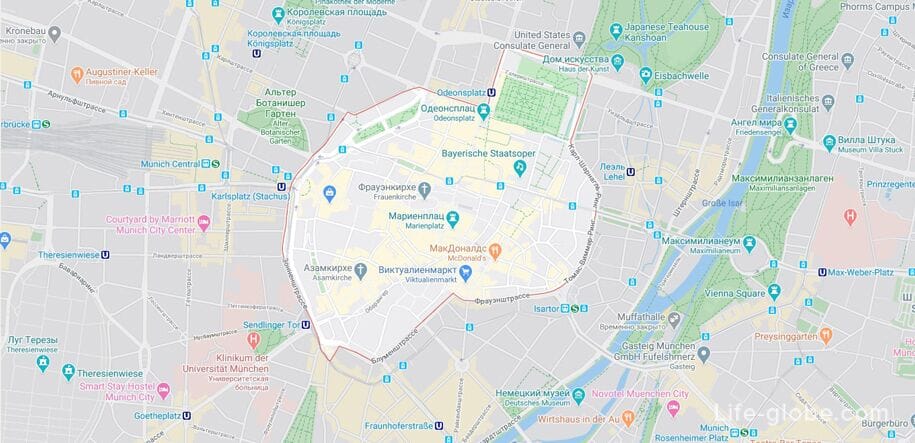
The Old Town of Munich (German: Altstadt München), is a part and center of the city of Munich, part of the Altstadt-Lehel district.
The Old Town of Munich corresponds to the area of the historic city center, which was surrounded by city fortifications from the Middle Ages until the end of the 18th century, and was the historical starting point for the growth of the city.
The old town was largely destroyed during the Second World War. The reconstruction was carried out with the preservation of the monumental buildings that define the city and, in accordance with the historical structure of the city.
Currently, the old town of Munich is included in the list of Bavarian historical monuments, is the center of the city, as well as a popular place for meetings, walks and recreation, both among local residents and numerous tourists from all over the world.
The old town is home to historical monuments and Munich's main attractions, including the residence of the monarchs, the court park, the old court, the city gate, shrines, town halls, and cultural institutions such as theaters and museums.
The old town is also distinguished by historical streets, some of which are pedestrian; small but cozy squares; an abundance of cafes, restaurants and shops, thanks to which the old town has also earned a reputation as a shopping area.
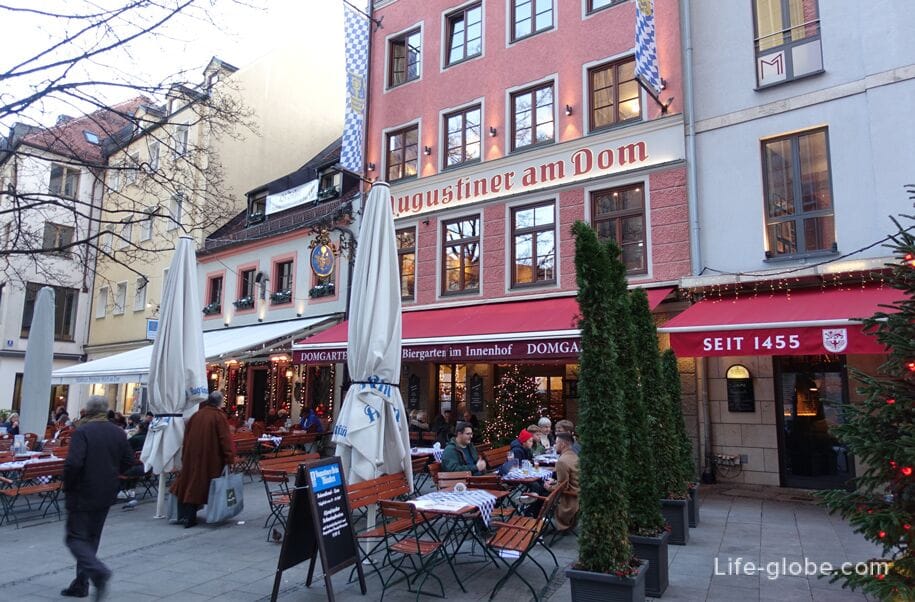
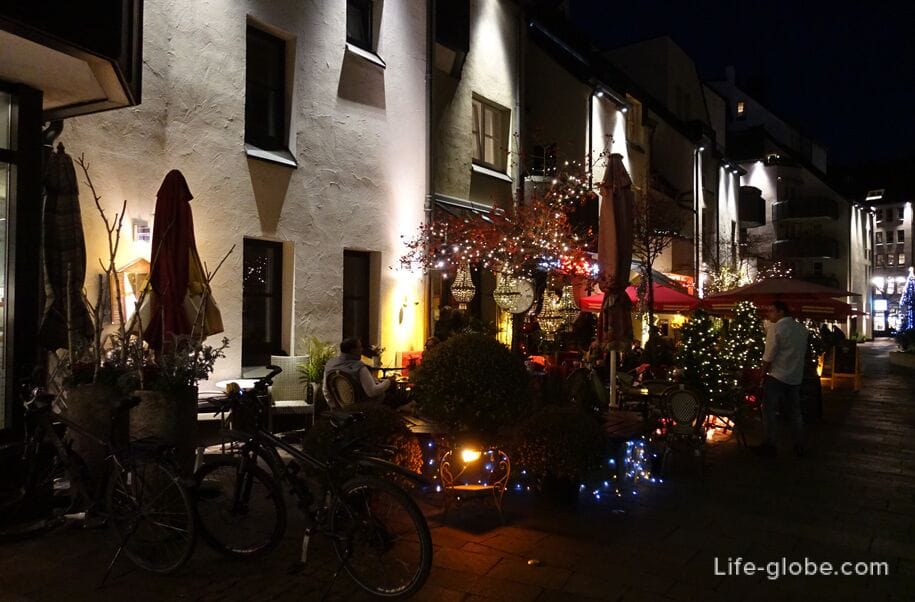

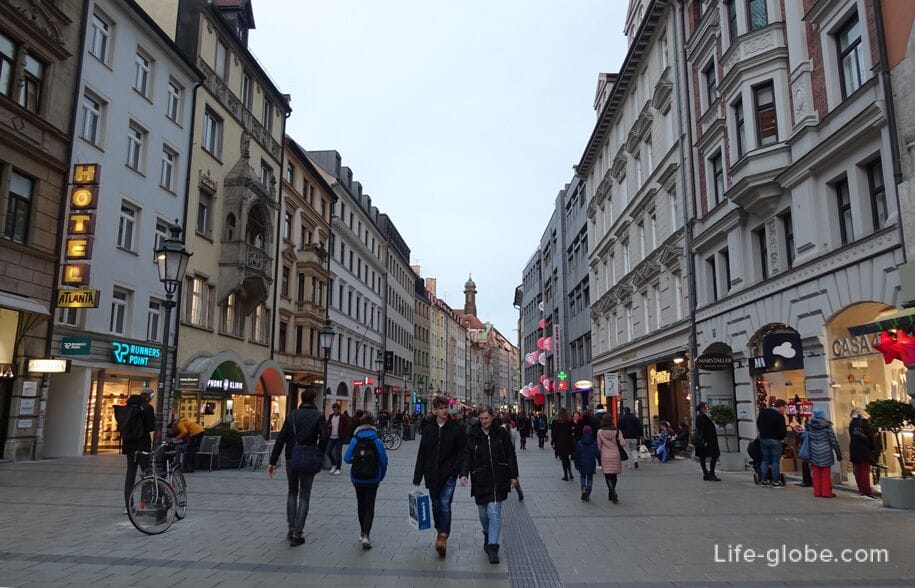
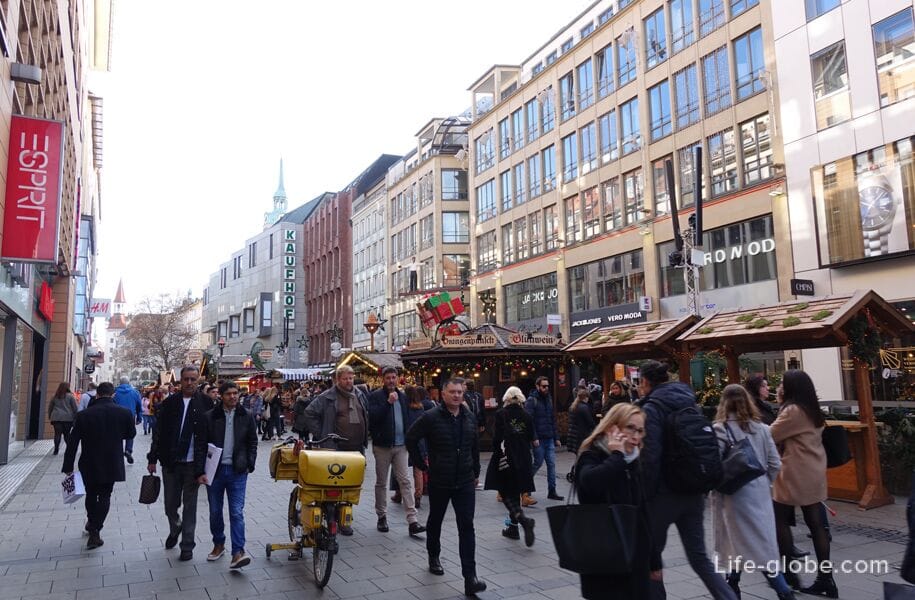
This article provides the most comprehensive list of attractions, places of interest, museums, viewing platforms and Christmas fairs of the Old City of Munich. If you want to know only about the most important sights and museums of the old town, then you can see the list of top sights and museums here →
The heart of Munich's old town has long been the Marienplatz square, where the traditional history of Munich began with the founding of the market in 1158 by Heinrich the Lion, and which today is a completely pedestrian area.
The center of Marienplatz is decorated with a tall column of Mary (Mariensäule), dedicated to St. Mary as the "patroness of Bavaria." The column was erected in 1638 to commemorate the end of the Swedish occupation during the Thirty Years' War.
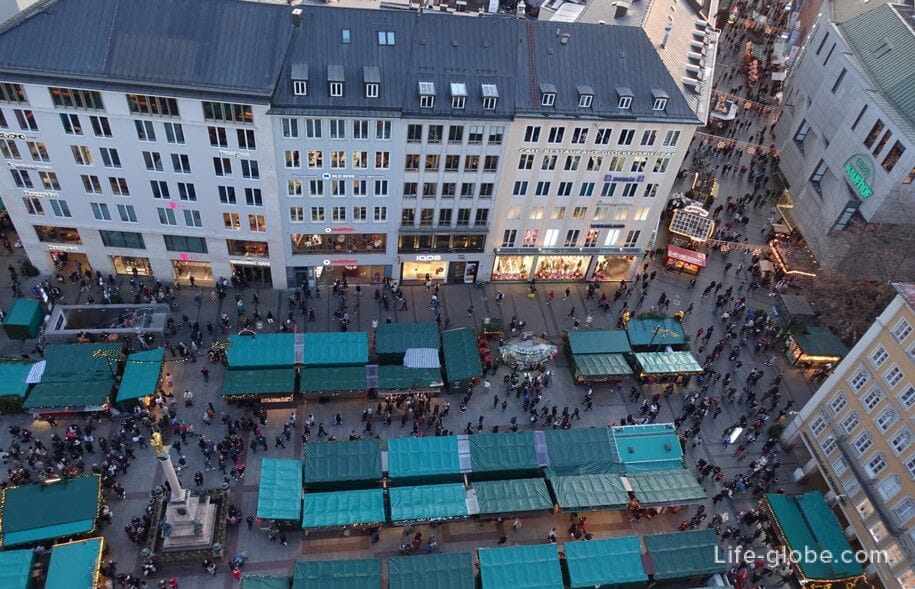
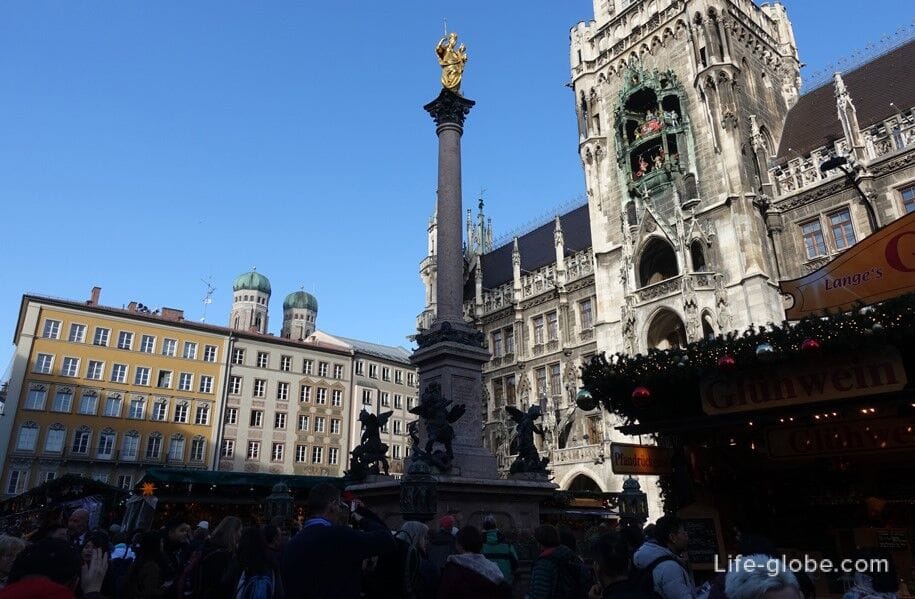
The northern and eastern sides of Marienplatz are marked by two town halls:
The New Town Hall (Neues Rathaus) is a neo-Gothic brick and stone building that dominates the square and was built from 1867 to 1909.
Currently, the town hall is a complex of buildings with courtyards and is the residence of the mayor and the headquarters of the Munich City Council. At the top of the Town Hall tower is an observation deck, giving a 360-degree view of Munich.
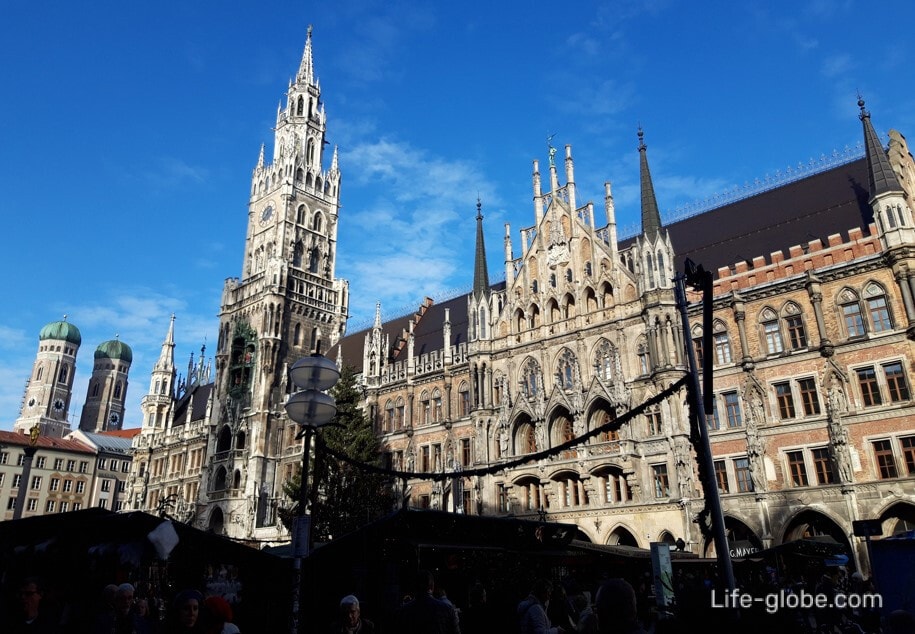
The old Town Hall (Altes Rathaus), dating back to the 14th century, is the predecessor of the New Town Hall.
The Old Town Hall originated in part from the old Munich city fortifications, which were converted into a 56-meter-high town hall tower.
On the four floors of the town hall tower is the Toy Museum (Spielzeugmuseum), whose private collection demonstrates the development of toys over four centuries. Read more about Marienplatz square…
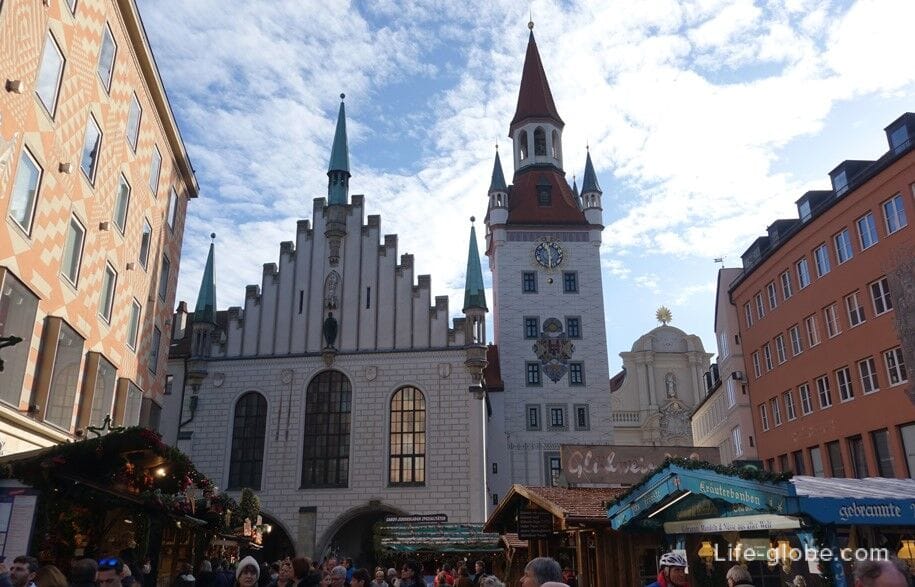
The old City of Munich is surrounded by three preserved (now reconstructed) city gates, originally part of the second city defense system.
The gate, together with other fortifications, was built by order of Ludwig IV of Bavaria, between 1285 and 1337.
The Sendling Gate (Sendlinger Tor) is located on the square of the same name, in the southern part of the old town, at the end of the Sendlinger Strasse (Sendlinger Str.).
The gate has a large central arch, two flanking towers with arched passages, and part of the inner wall. Read more about the Sendling Gate…
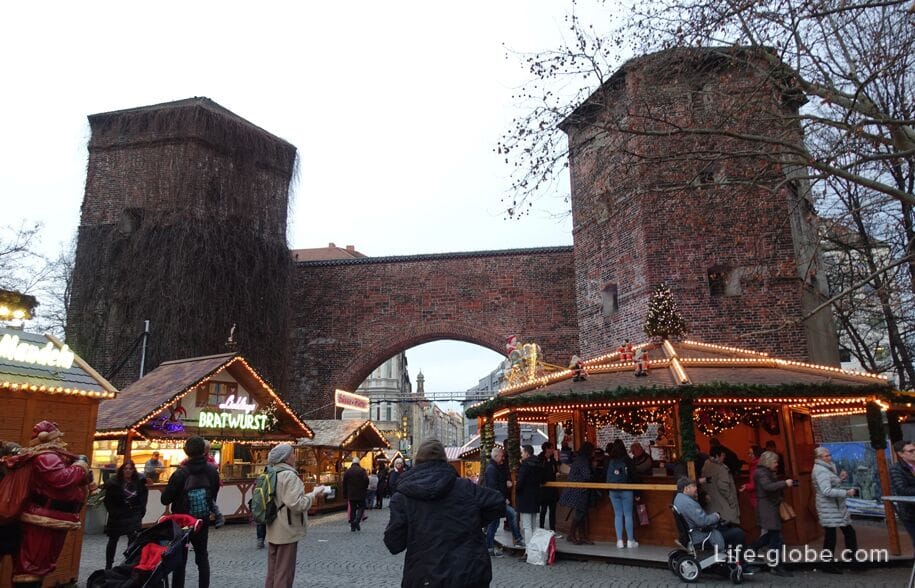
The Karl's Gate (Karlstor) marks the western border of Munich's historic old town. In the east direction, the Karl's Gate leads to the pedestrian area of the city - the lively shopping street Neuhauser strasse (Neuhauser Straße), and in the west direction-leads to the Karlsplatz square.
The gate consists of two small pseudo-Gothic towers connected by a bridge. Portals (passages) in the gates are made in the form of three high pointed arches. Read more about the Karl's Gate…
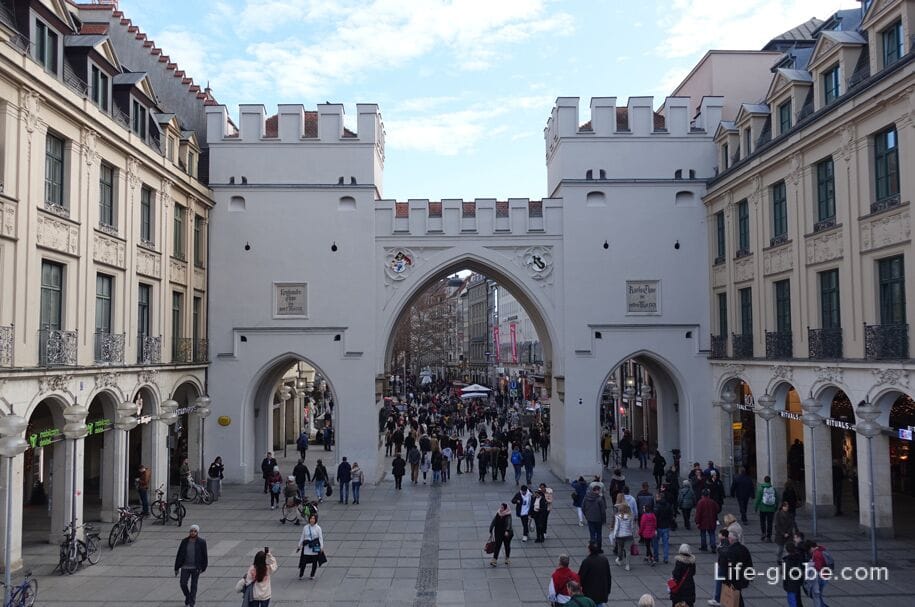
Isar Gate (Isartor) was named after the river Isar, the road to which passed (and passes) from the city center through the gate.
They are located on the eastern edge of Munich's old town, at: 50 Tal Street (Tal).
Today the gate consists of: a rectangular clock tower; a trapezoidal courtyard, which is accessed by archways; the courtyard itself is surrounded by walls, with two octagonal side towers with arched openings (passageways).
On the eastern wall of the gate is the famous fresco "The triumphal procession of Ludwig IV of Bavaria after his victorious battle against Frederick III the Fair at Muldorf in 1322".
In the side towers of the gate is the museum of Karl Valentine (Valentin Karlstadt Musäum), dedicated to the Bavarian comedian Karl Valentine and his fellow actress Liesl Karlstadt. Read more about the Izar Gate and the museum…

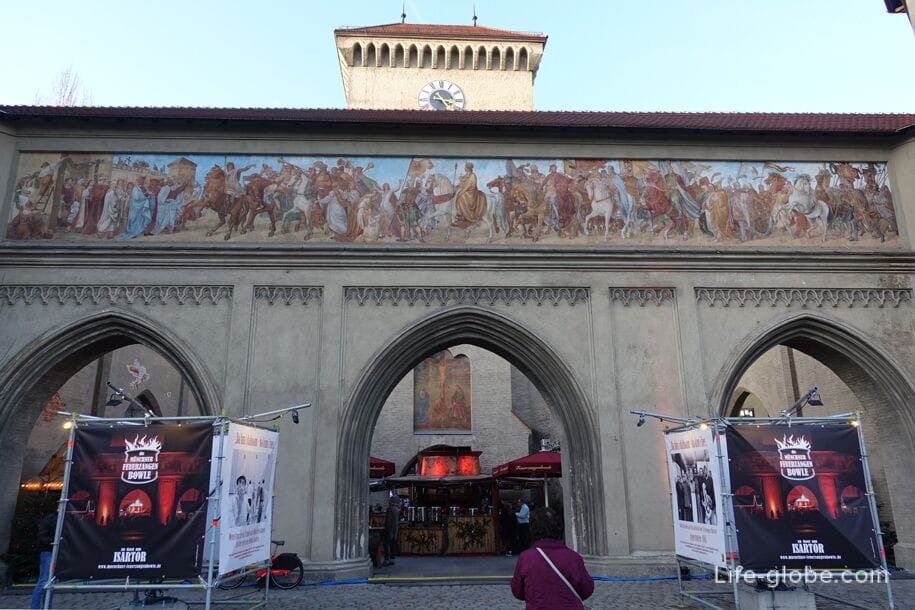
Less than 100 meters to the north of the Isar Gate are two more historical evidences of the former city fortifications of Munich:
- remains of the city wall and the foundation of the Prince's Tower (Prinzessturm);
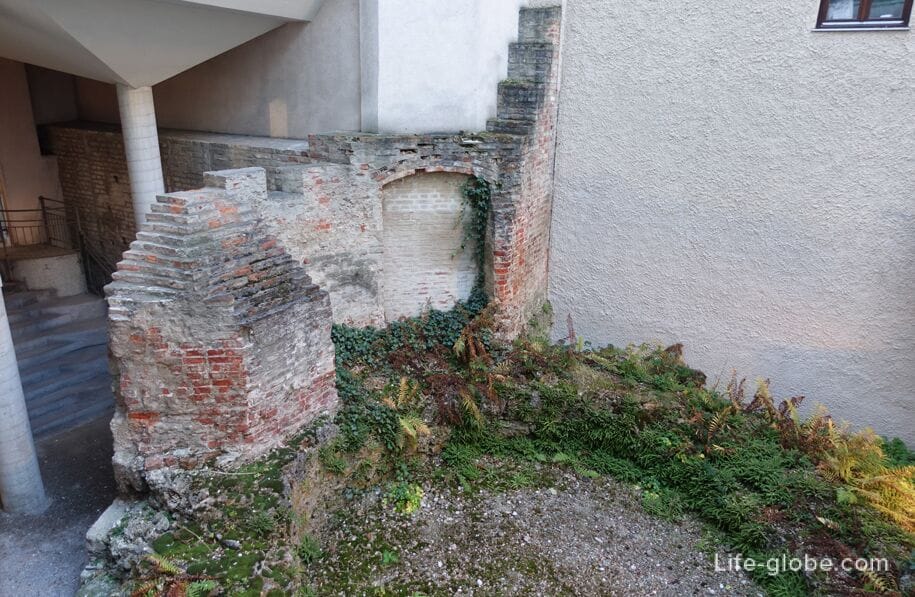
- Windeliker House (Vindelikerhaus), with the remains of the former Luga watchtower (Lueg ins Land) built into the south wall.

In the north-western part of the old town, on Jungfernturmstrasse, there is a small part of the ruins of the former second city wall of Munich (Ruins of Munich's second city wall).
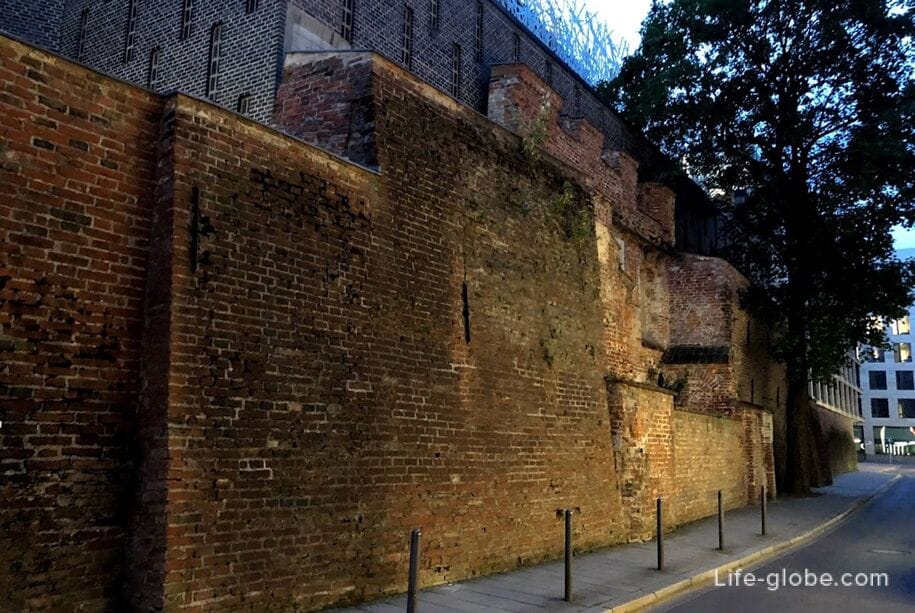
Maxtor is the youngest city gate in Munich. They were erected in 1805, after the city wall was demolished on this site.
The gate did not have any defensive significance-it visually covered the Prannerstrasse street from the open area to the west.
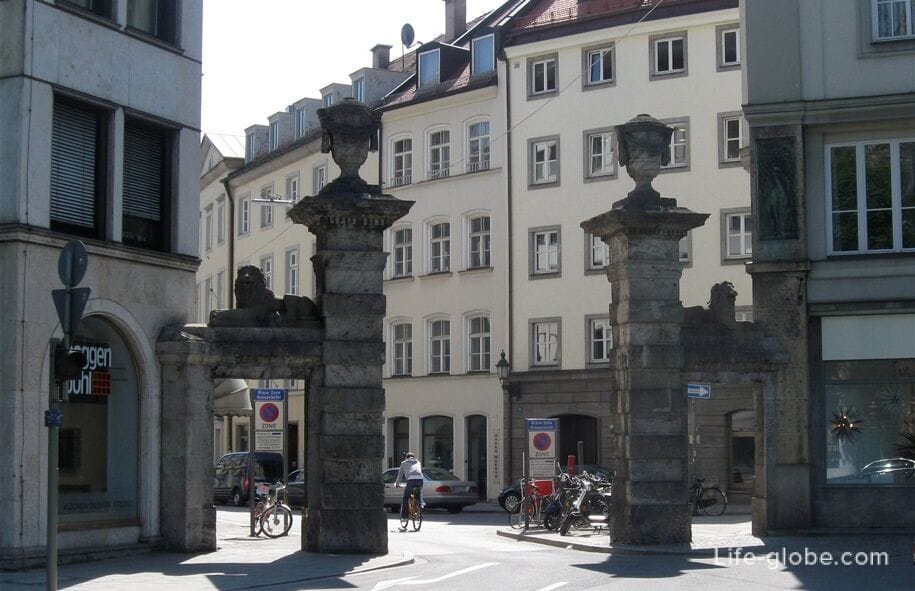
On the south side of the Maxtor, in a niche near the corner walls of the houses numbered 18 and 19 on Maximiliansplatz, there is a historical monument - fountain "Grotto" (Grottenbrunnen). Read more about the Maxtor Gate and the "Grotto Fountain"…
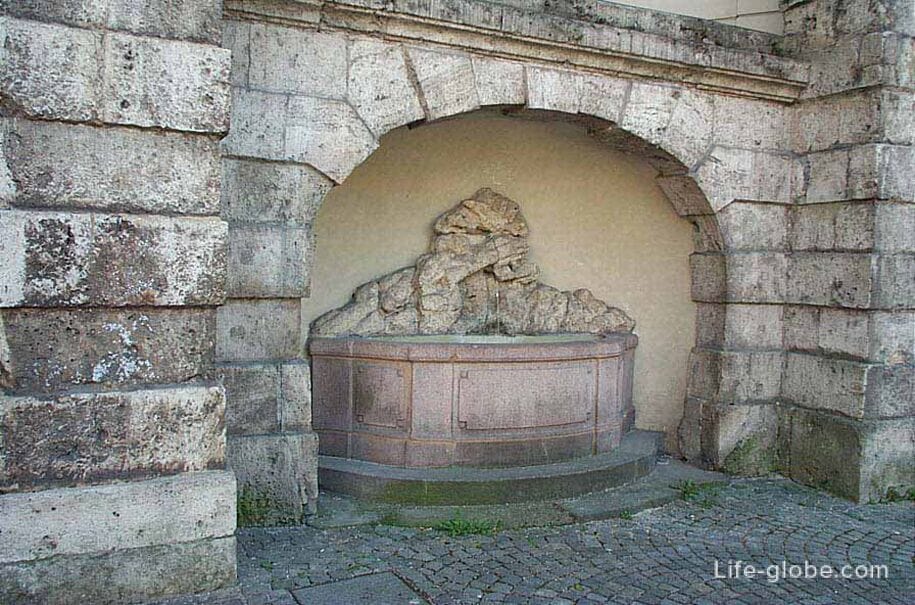
In the center of Munich are two former residences of the rulers of Bavaria and the former court garden.
The old courtyard (Alter Hof) is a former ducal castle and the first imperial residence of the rulers of Bavaria, taking its history from the 12th century, when the old courtyard was built as a castle.
In 1255, Alter Hof became the residence of Ludwig II, Duke of Bavaria. Later, under Ludwig IV, the castle became a permanent imperial residence and remained so until the 15th century.
Today, the Old Courtyard is publicly accessible and is a complex of buildings with a courtyard. Read more about the Old Courtyard…

When, with the expansion of the city, the residence (the Old Courtyard) became unsafe, in 1385, the construction of the so-called "New Residence"began just to the north. The new residence later became a full-fledged residence of the rulers and turned into a luxurious palace, which was the largest inner city palace in Germany and is now called the Munich Residence (Münchner Residenz).
Today, the Munich Residence is one of the most important art museums in Europe, with courtyards, the Cuvillier Theater, a court church, and a library. Read more about the Munich Residence…
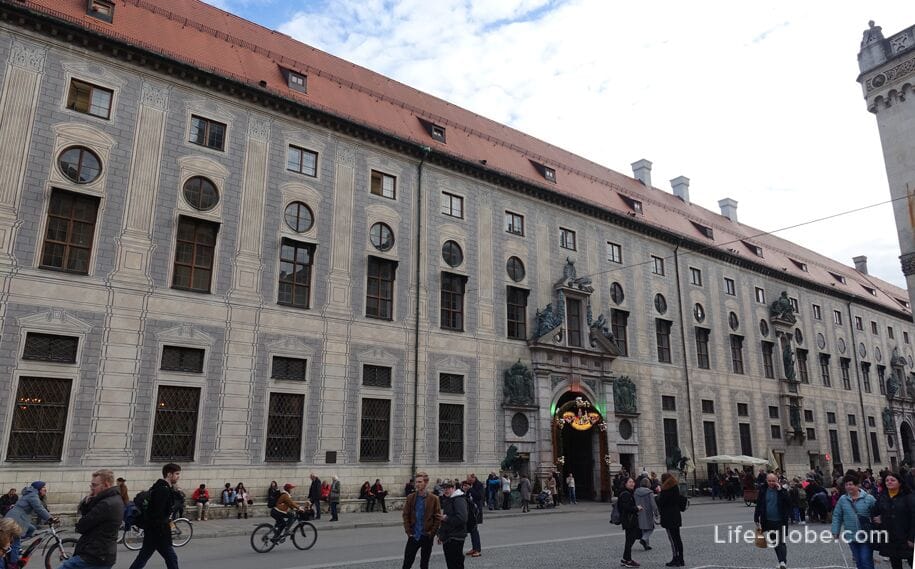
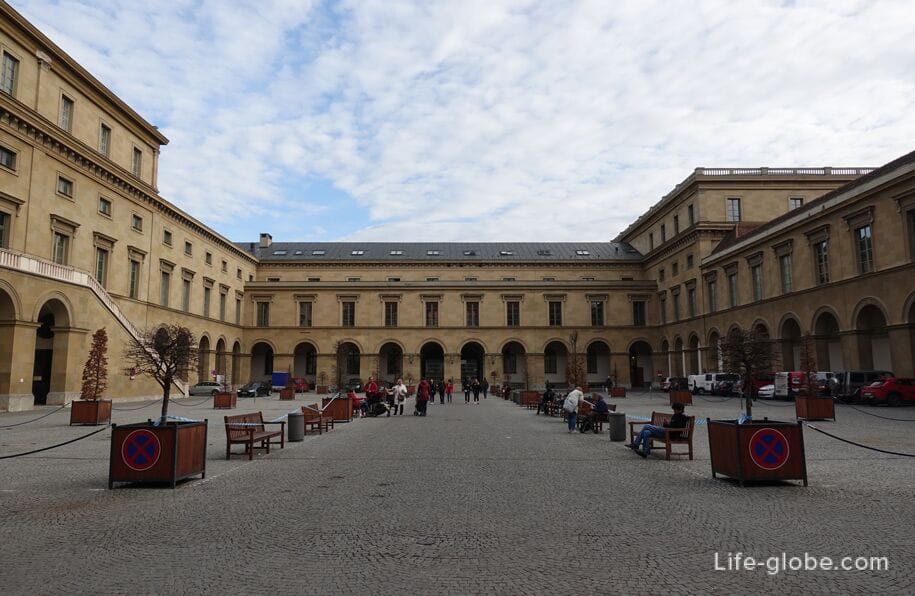
Adjacent to the north wing of the Munich Residence is the Hofgarten Park, which was originally built as the court garden (inner garden) of the Munich Residence.
Today it is a public park with a wall and attractions located in the park.
The main entrance to the park opens onto the Odeonsplatz. Read more about the Hofgarten Park…
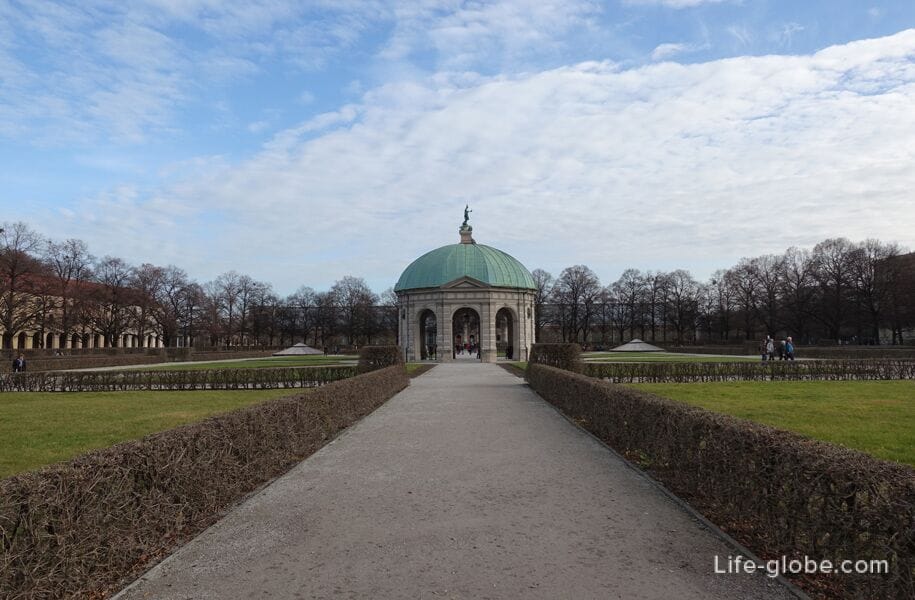
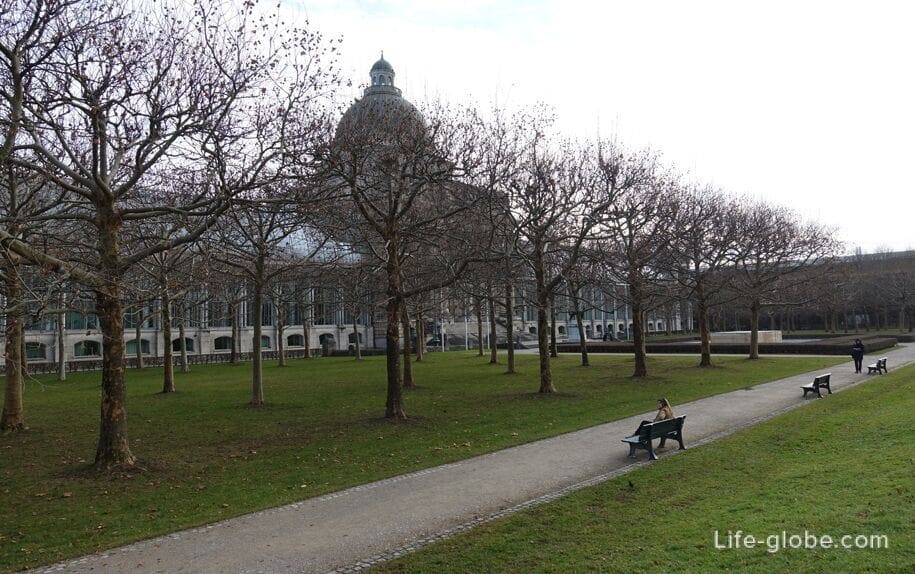
Odeonsplatz square is located on the northern outskirts of Munich's Old Town.
The foundation for the square was laid under King Maximilian I of Bavaria on the site of the city wall destroyed in 1791 and with the aim of replacing the Schwabinger Gate (Schwabinger Tor) with a new square.
Odeonsplatz is home to such significant objects as:
- Feldherrnhalle - the so-called "Hall of the Bavarian Generals", which is a monumental loggia and monument built in the name of King Ludwig I in 1841-1844 to honor the glory of the Bavarian army and its victorious generals;
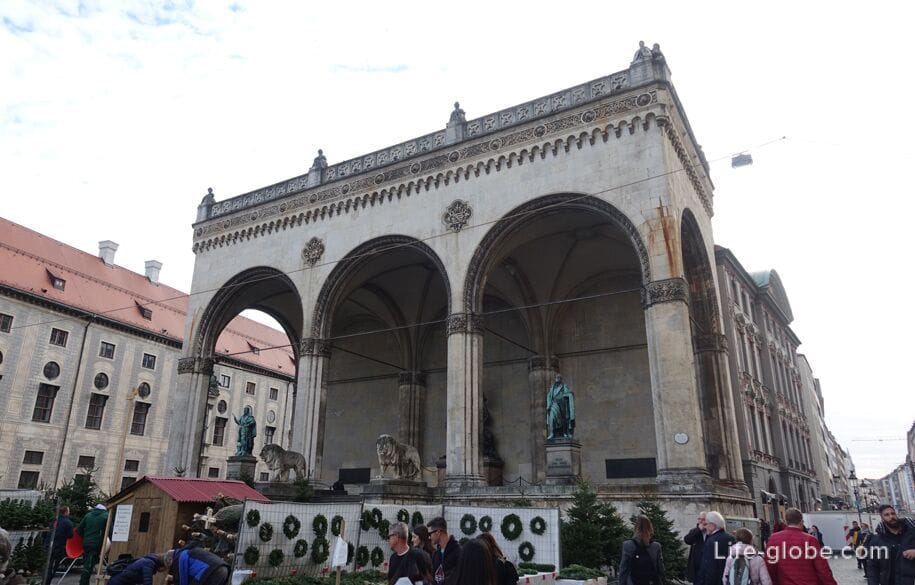
- The Theatrical Church of St. Cajetan (Theatinerkirche St. Kajetan), which is a Catholic church that was the court, cathedral, and order church of the Theatines.
The church was established in gratitude for the birth of the long - awaited heir to the Bavarian crown-Prince Max Emanuel in 1662;
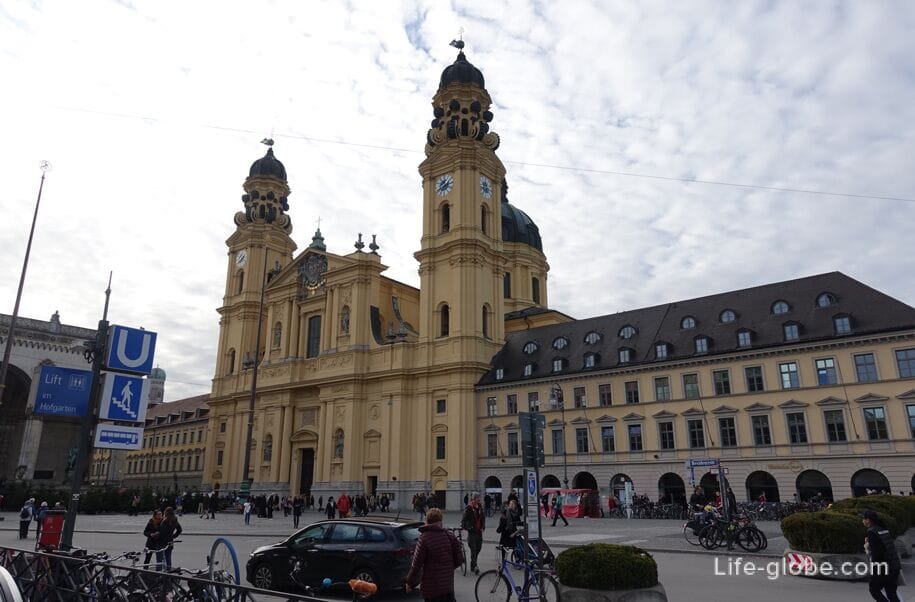
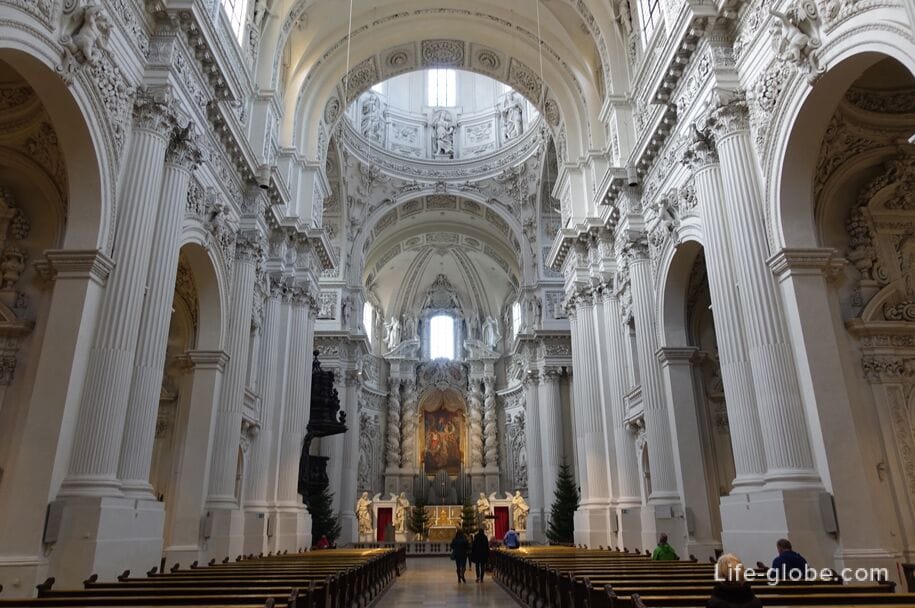
- In addition, the Odeonsplatz is home to: Moy palace; the wing of the Munich Residence; the main entrance to the Hofgarten Park; the monument to Ludwig I; the commercial building of the Bazaar; the former Odeon concert hall and the Leuchtenberg Palace, designed by the architect Leo von Klenze. Read more about Odeonsplatz square…
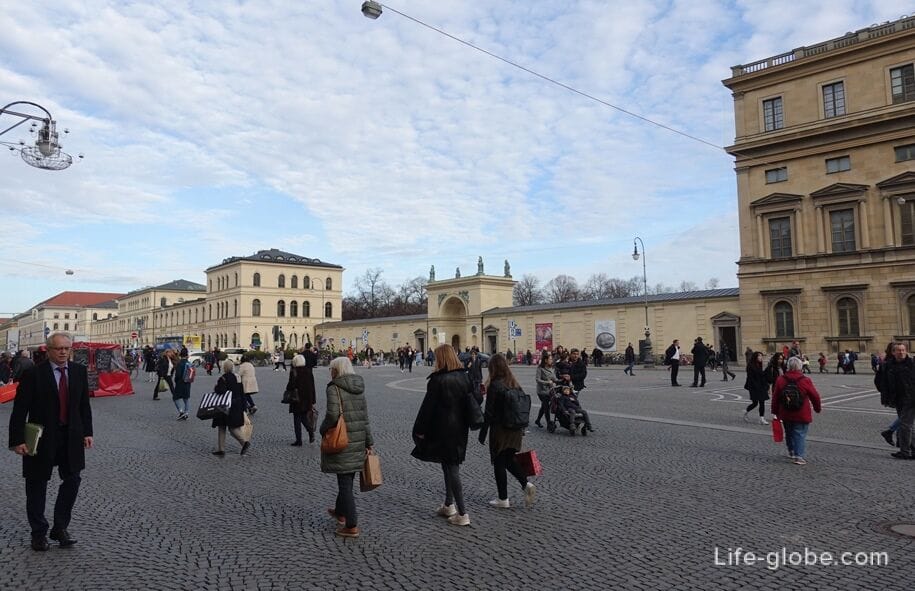

The Frauenkirche or Cathedral of the Blessed Virgin Mary / Cathedral of Our Lady (Frauenkirche, full name: Dom zu Unserer Lieben Frau) is the current cathedral of the Catholic Archdiocese of Munich and Freising, whose history dates back to 1468.
The church building is distinguished by two high towers-bell towers. At the top of the south tower is an observation deck, giving panoramic views of the city and the surrounding area. Read more about the Frauenkirche…
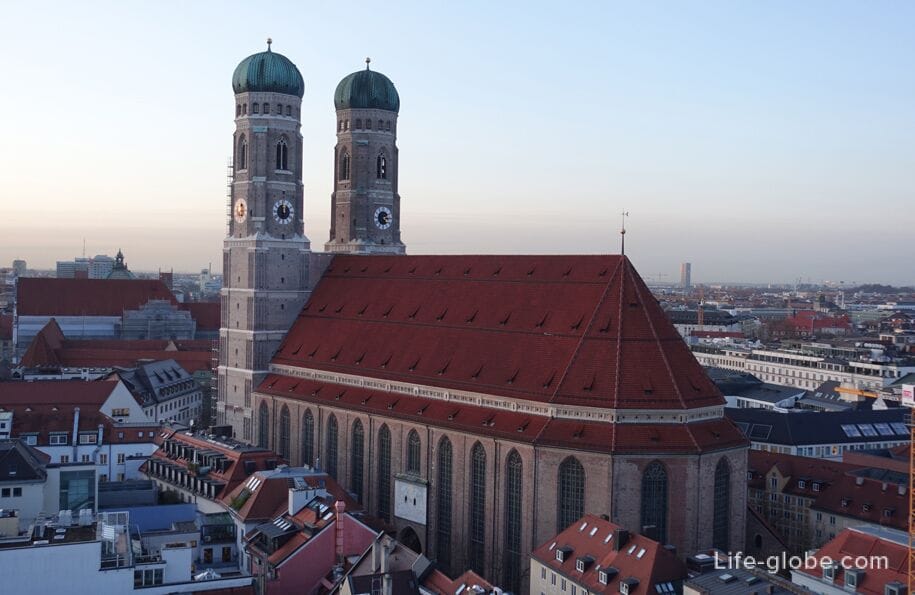
The Hofbroyhaus (Hofbräuhaus) is one of the oldest beer restaurants in Munich.
The Hofbroyhaus was founded in 1589 and opened by the Bavarian Duke Wilhelm V as a court brewery.
At the beginning of the 20th century, the Hofbroyhaus became one of the most popular places for recreation and meetings of citizens.
Currently, the Hofbroyhaus functions as a beer restaurant with a beer garden and is one of the oldest, largest and most famous public houses not only in Munich, but also outside the city. Read more about the Hofbroyhaus restaurant…
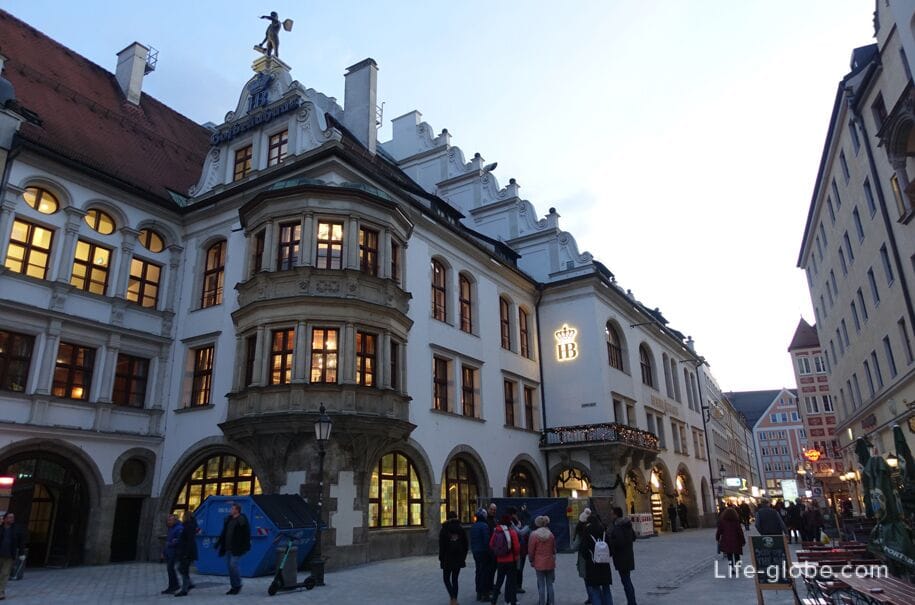
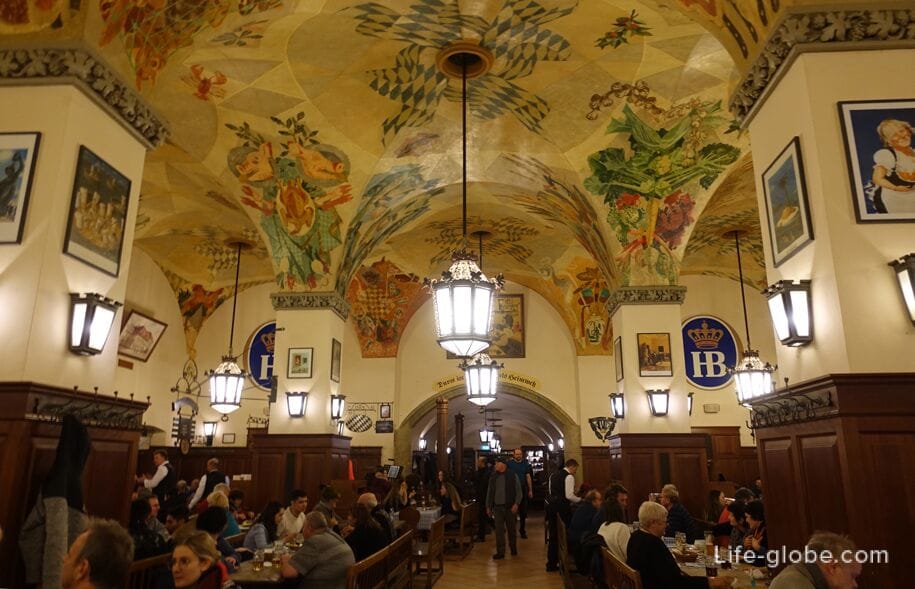
The Hofbroyhaus is located on the Platzl square, one of the most beautiful public squares in the historic part of Munich.
Platzl is a small pedestrian area of irregular shape, around which there are bright historical buildings - old townhouses, on the first floors of which today there are cafes and restaurants.
In addition to the Hofbroyhaus restaurant on Platzl Square, the Orlando House (Orlandohaus), built around 1900 and always used as a restaurant, tavern or coffee shop, is also notable. Read more about Platzl Square…

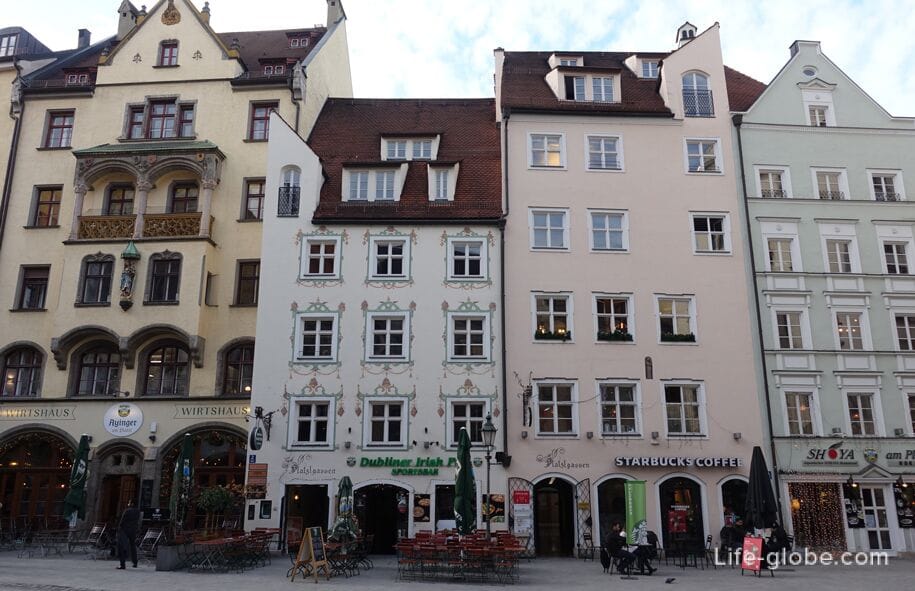
Max Joseph Square (Max-Joseph-Platz) was created in the early 19th century and named after King Maximilian I Joseph of Bavaria.
The center of the square is decorated with a monument to King Maximilian I (König Maximilian I Joseph von Bayern Denkmal), installed in 1835.

In the eastern part of the square there are two theaters:
- The National Theater (Nationaltheater) is an opera house, whose history dates back to 1811 and whose main appearance is formed by a wide staircase, a portico with eight Corinthian columns and a triangular two-level pediment with statues and paintings;
- The Residence Theater (Residenz Theatre) is a historic court theater that was known as the Couvillier Theater (Cuvillies-Theatre) and was built in the immediate vicinity of the Munich residence in 1751-1753. Read more about Max Joseph Square...
Photo of the new Residence Theater (left) and the National Theater (right)
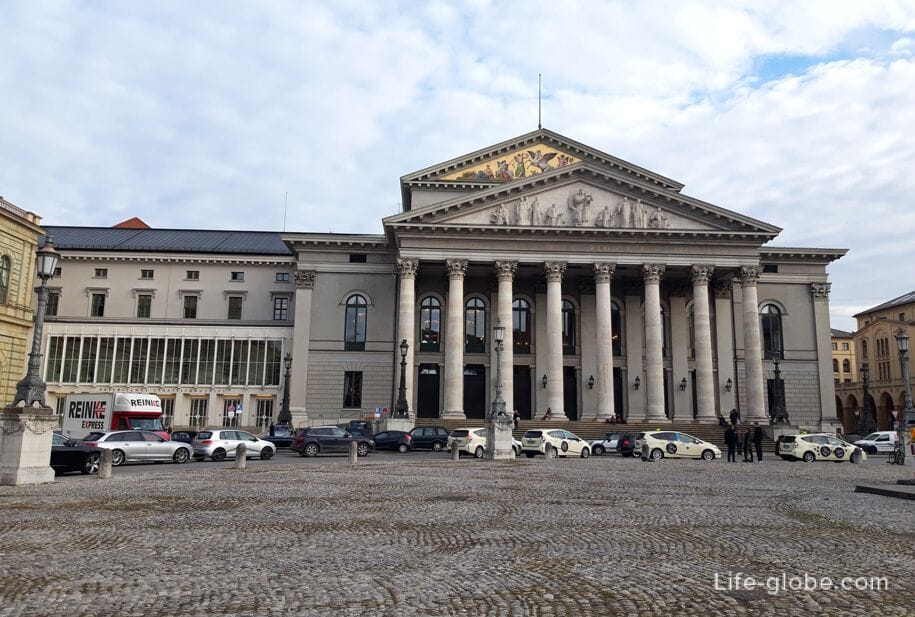
The church of St. Peter, also known as "Old Peter" (Peterskirche, Alter Peter) dates back to the 11th century.
In the walls of the church in a glass sarcophagus are the relics of one of the first Christian martyrs - Saint Munditia of Rome (Saint Munditia), decorated with jewels.
The bell tower of the church has a circular viewing platform that offers panoramic views, including the Marienplatz Square, the old town and the surrounding area. Read more about St. Peter's Church and the observation deck…
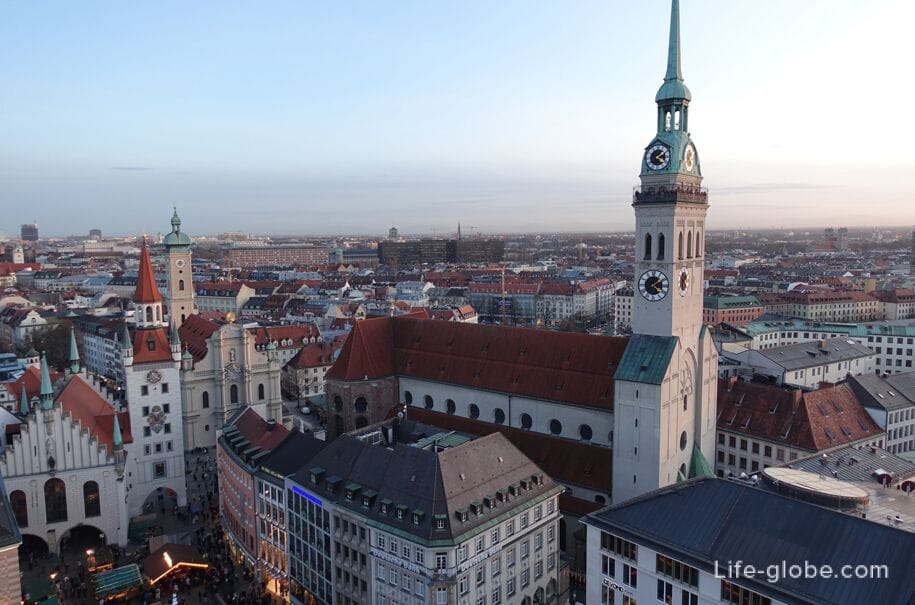
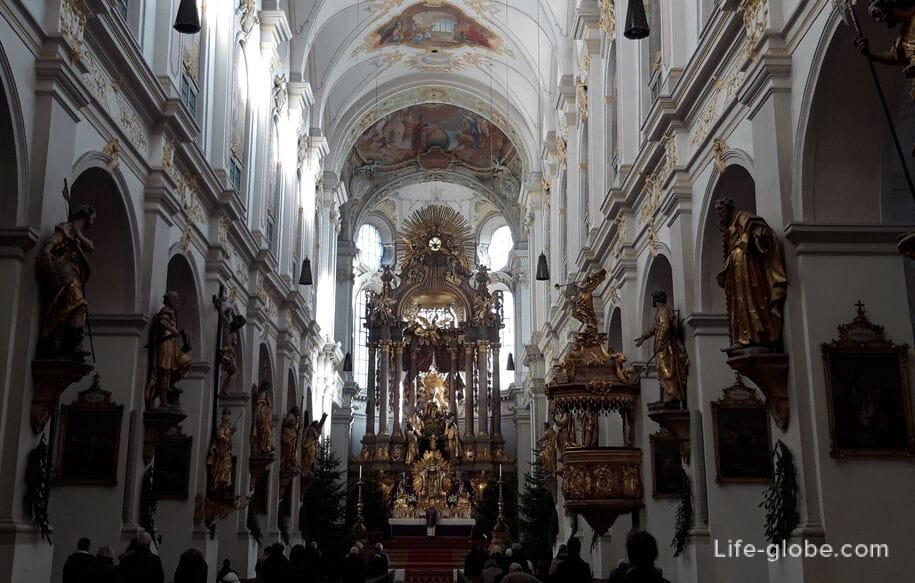
St. Peter's Church is located on square and Rindermarkt Street.
"Rindermarkt" means "Cattle Market" and is also known as"Cow Market".
Initially, this section of the city was used as a market square for the cattle trade. Later, the rich patricians built their residential houses on the Rindermarkt.
In the center of the square is the Rindermarkt fountain (Rindermarktbrunnen) with a sculptural composition that marks the historical function of the former cattle market.
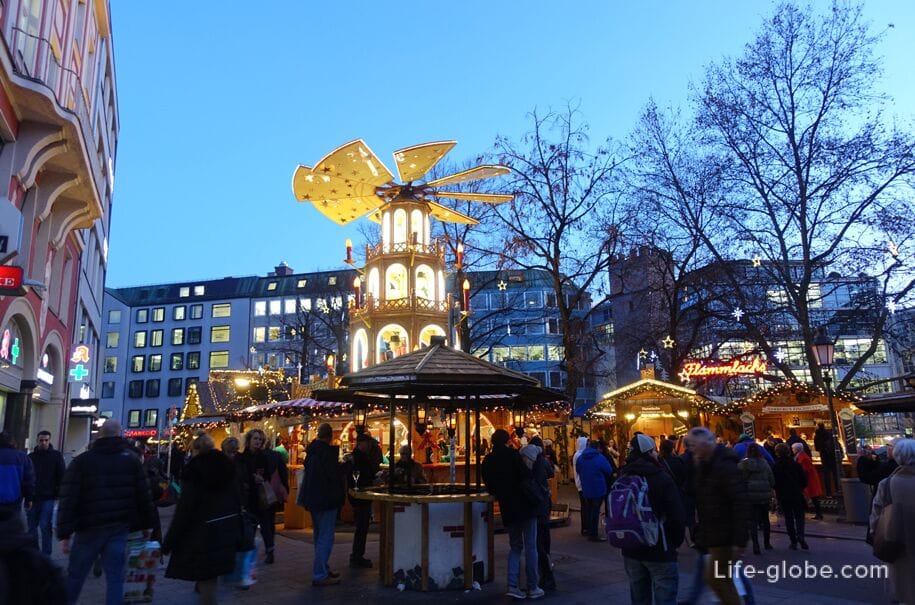

In the eastern part of the Rindermarkt is the Lion Tower (Löwenturm), which is an old structure and which most likely was built as a water tower for the city garden or a structure for drainage and was also used as a latrine tower. Read more about Rindermarkt…

Saint Jacob Square (Sankt-Jakobs-Platz) is located in the south-eastern part of the historic old town.
Today, the area is restricted from vehicle traffic. On the square there are places for recreation, a fountain, two museums, a synagogue, a church and historical houses.
Objects in St. Jacob Square:
- The complex of the Jewish center, which is an architectural ensemble consisting of three independent buildings located near each other: the new synagogue Ohel Jacob, the public center of the Jewish cultural community of Munich and Upper Bavaria, the Munich Jewish Museum;
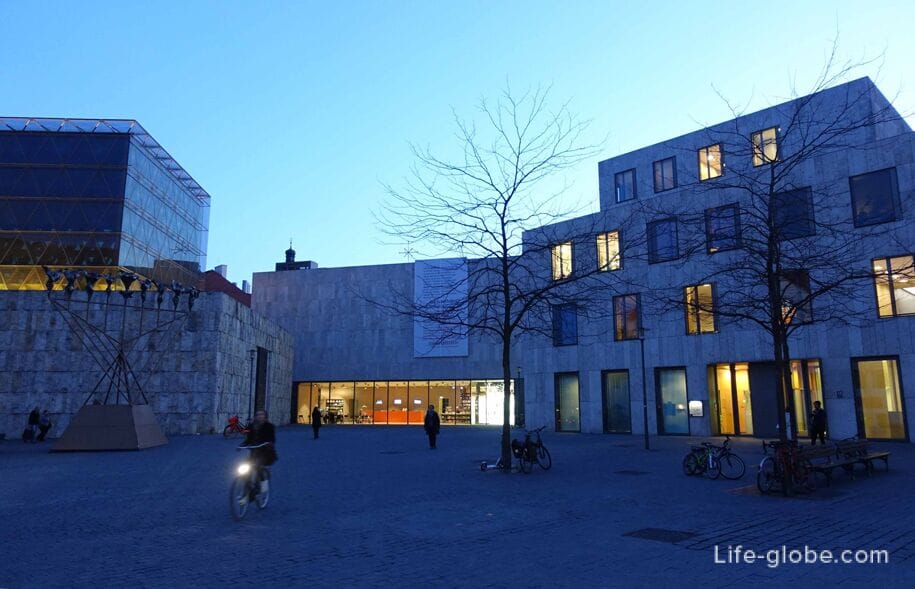
- Munich City Museum (Münchner Stadtmuseum) with Film History Museum (Filmmuseum).
The museum's exhibitions tell about the history and fate of the city, national socialism in Munich, migration, the history of cinema and puppet theater since the 19th century, fashion, music, advertising art, urban culture, etc.;
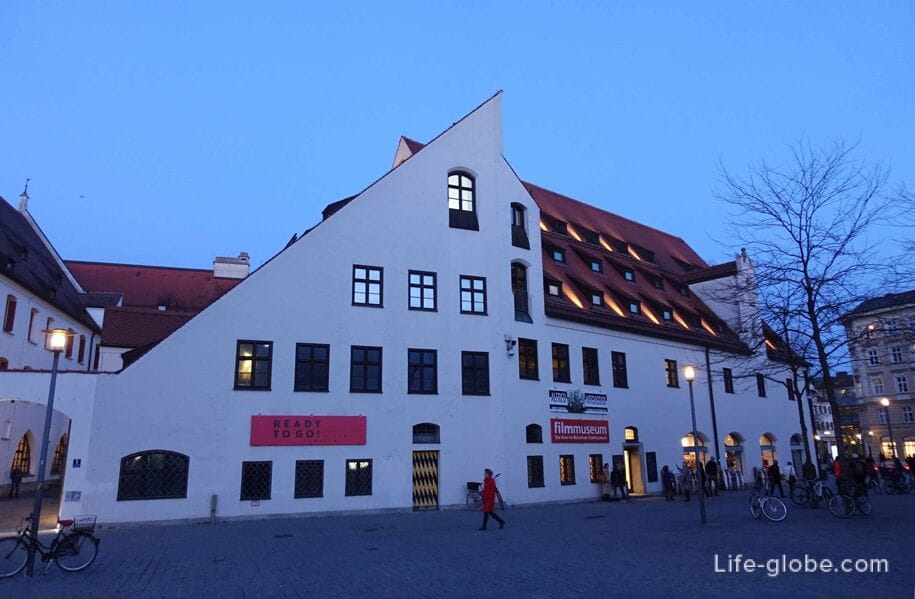
- ORAG house (ORAG-Haus) - historic building with bay windows, paintings and stucco on the walls.
The house was built in 1897 as a business building.
In 1929, the building became the property of the clothing atelier "ORAG", which is still located in the house;
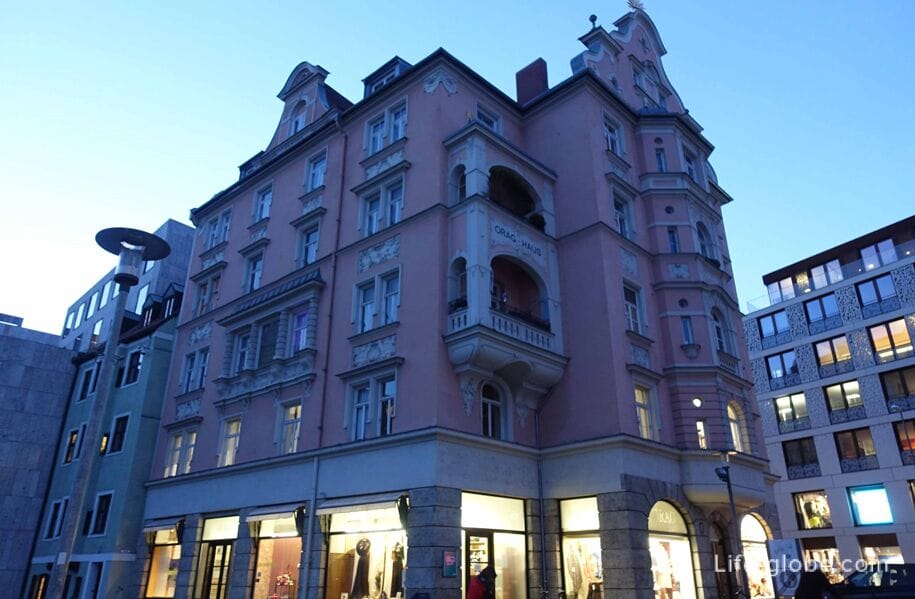
- Ignaz Gunther Houseа (Ignaz-Günther-Haus) - a four-story narrow building with a gable mansard roof.
From 1761 to 1775, the house was the living and working place of the German sculptor and wood carver, working in the Bavarian Rococo technique - Ignaz Gunther;
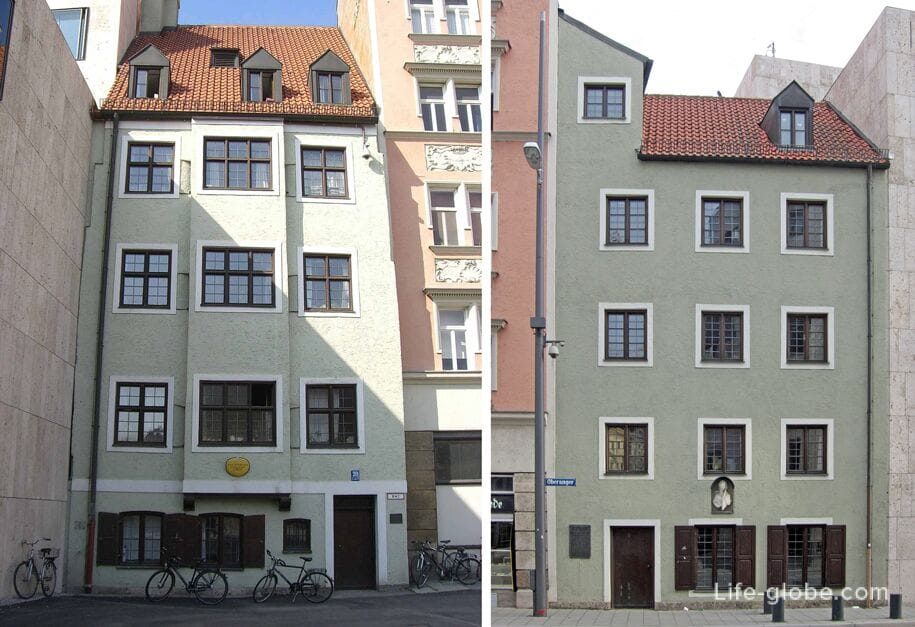
- The church of St. Jacob on the Unger (Kath. Kirche St. Jakob am Anger), dating back to the 13th century.
During the war, the church was destroyed down to the outer walls. In 1955-1957, a new red brick building was erected. Read more about St. Jacob Square…

Viktualienmarkt - a permanent food market in the center of Munich, which, in addition to the market, is also a square.
The market on the Viktualienmarkt is open all year round: from Monday to Saturday, except public holidays, from 8: 00 to 20: 00 hours.
On the market is the beer garden "Biergarten Am Viktualienmarkt", which, although not the largest in Munich, is certainly the most central.
On the eve of Christmas and New Year's Eve, the square has a Christmas market (Weihnachtsmärkte Viktualienmarkt). More about Viktualienmarkt...
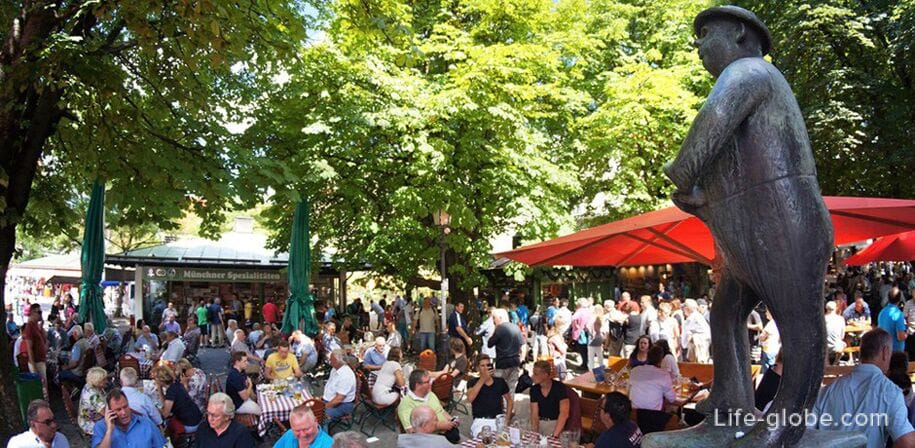
Each of the streets in the old city of Munich is beautiful in its own way.
However, within the old town there are some of the most visited and significant streets:
Sendlinger Strasse street (Sendlinger Straße) has been known since 1318 and today is a historical, pedestrian and shopping street, along which there are historical buildings with bay windows (now restored), there are also newer buildings and a few, but significant sights of the city:
- the former home of the brothers Azam (Asamhaus) and Azamkirche (Asamkirche), together representing an architectural ensemble and a masterpiece of the late Baroque;
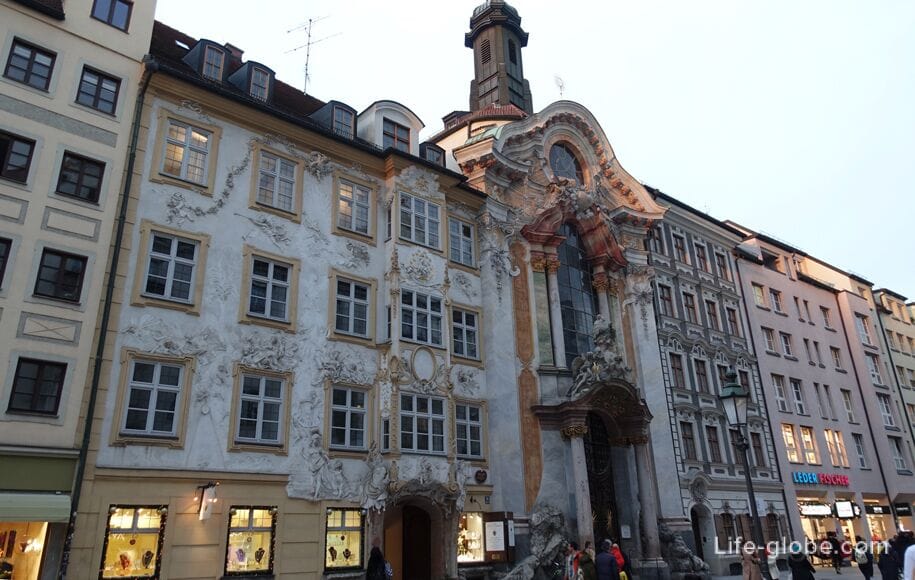
- The historical monument is the Ruffini House (Ruffinihaus), consisting of a group of three houses and built by Gabriel von Seidl in the early 20th century. Learn more about Sendlinger Strasse…

The streets of Kaufingerstrasse and Neuhauser Strasse (Kaufingerstraße, Neuhauser Straße) merge with each other and together form the central pedestrian zone and one of the most important shopping axes of Munich.
Along the streets there are attractions such as:
- The "House of the beautiful Tower" (Haus zum Schönen Turm), which is associated with the Munich urban legend, and whose name refers to the former gate tower "Schönen Turm", previously located in front of today's house and part of the old city wall;
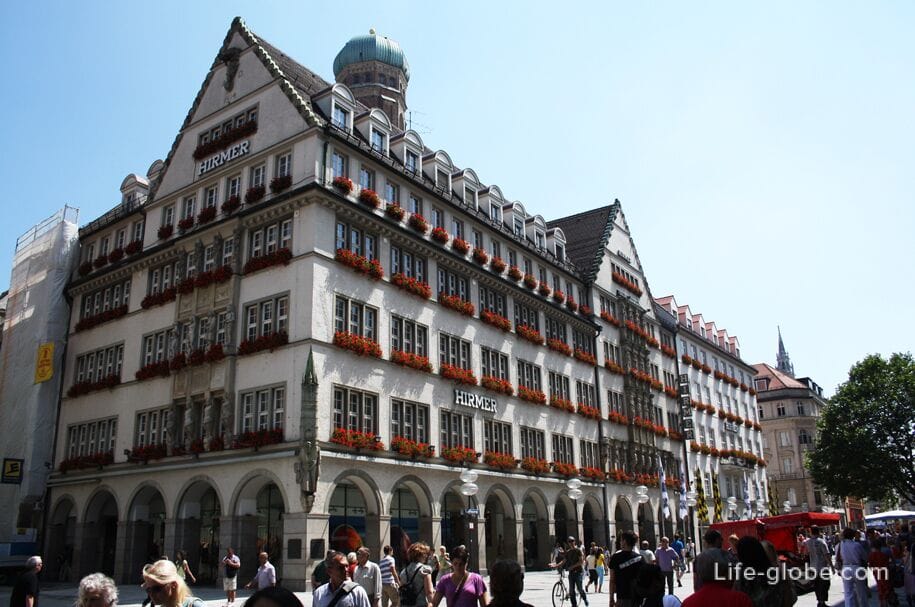
- The former Augustinian Church (Augustinerkirche), which belonged to the Augustinian Monastery and was built in the 13th century. Today, the church houses the German Museum of Hunting and Fishing (Deutsches Jagd und Fischereimuseum);
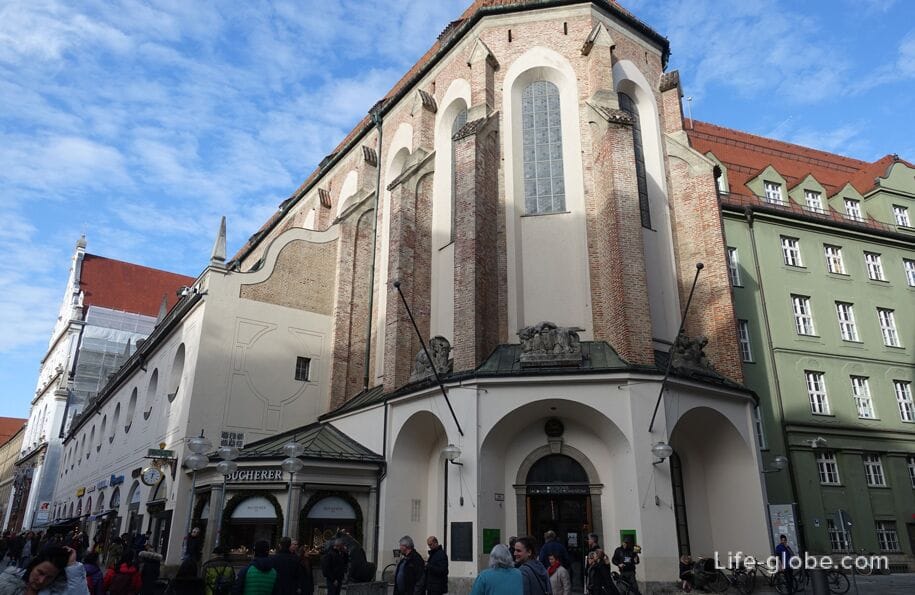
- St. Michael's Church (Jesuitenkirche St. Michael), considered the largest and first Renaissance church north of the Alps;

- The Old Academy Building (Alte Akademie) is a former Jesuit college, built in the 16th century by order of Duke Wilhelm V of Bavaria and today used for retail, offices and gastronomy;
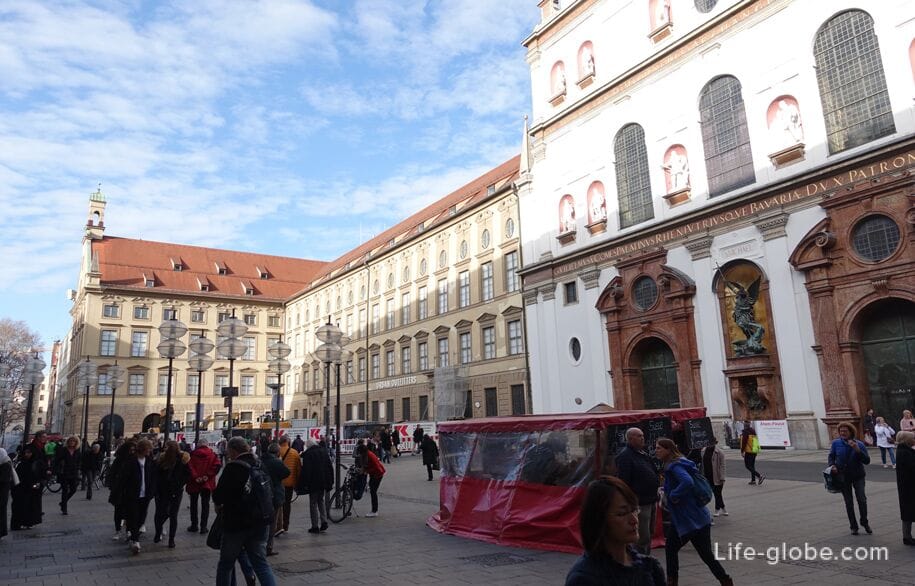
- Burghersaal Church (Bürgersaalkirche) - Civic Hall (Bürgersaal), built in 1709-1710 as a new prayer and conference hall for the meetings of the Marian Congregation of the Male Community "Annunciation". More about Kaufingerstrasse and Neuhauser Strasse …

Maximilianstrasse is one of the royal avenues of the city, one of the main streets of Munich and one of the most expensive streets in Germany.
Along the street are located: Vier Jahreszeiten Kempinski München 5-star Hotel, Tering-Jettenbach Palace (Palais Toerring-Jettenbach), Munich Chamber Theater "Kammerspiele", Upper Bavaria Government Building, Five Continents Museum and buildings that are known for their galleries, which house retail outlets of world brands, designer and jewelry stores, boutiques and salons. More about Maximilianstrasse…
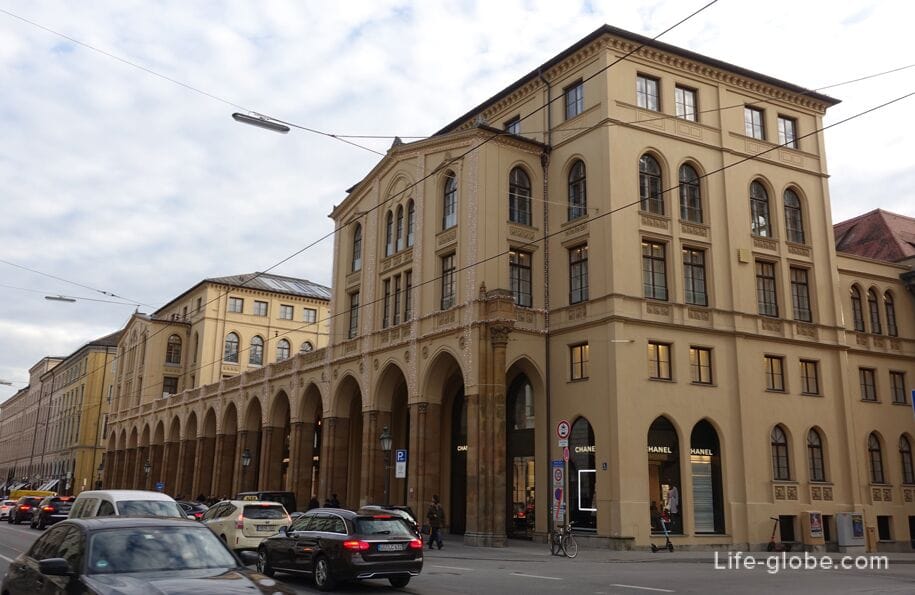
Cardinal Faulhaber Street (Kardinal-Faulhaber-Straße) It is located in the north-western part of the old city of Munich and in the past was a place where aristocratic palaces and representative buildings were built.
Street sights:
- The Montgela Palace (Palais Montgelas), built in 1811-1813 for Count Maximilian Josef von Montgelas in the classical style.
Since 1969, the palace has been integrated into the historic 5-star Hotel Bayerischer Hof;
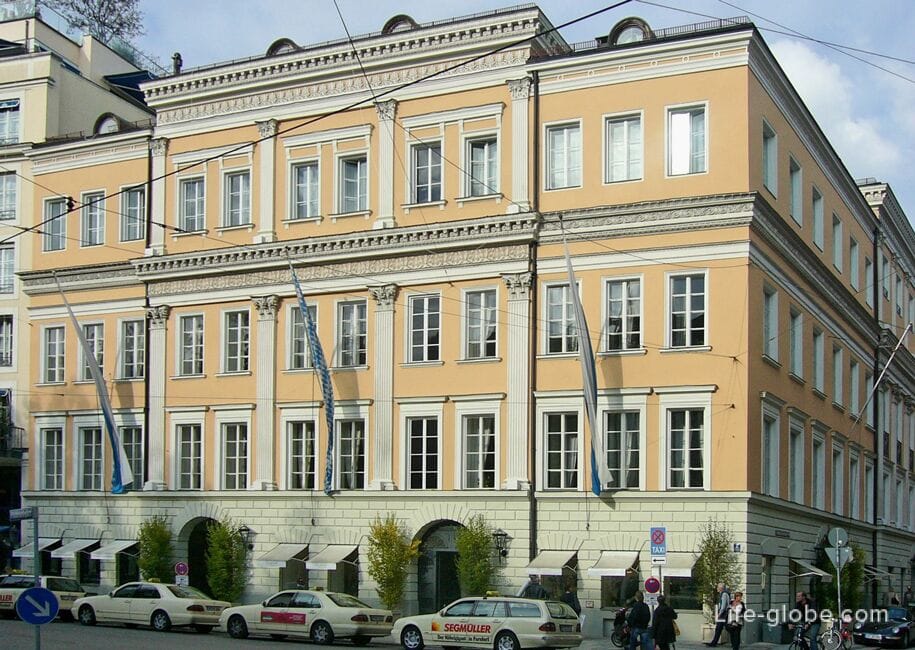
- monument-memorial to Kurt Eisner (Kurt-Eisner-Denkmal), located near the palace of Montgela and is a metal floor plate (plate) installed in the open air on the sidewalk in memory of the assassination of the first Prime Minister of Bavaria-Kurt Eisner - on February 21, 1919 in this place;
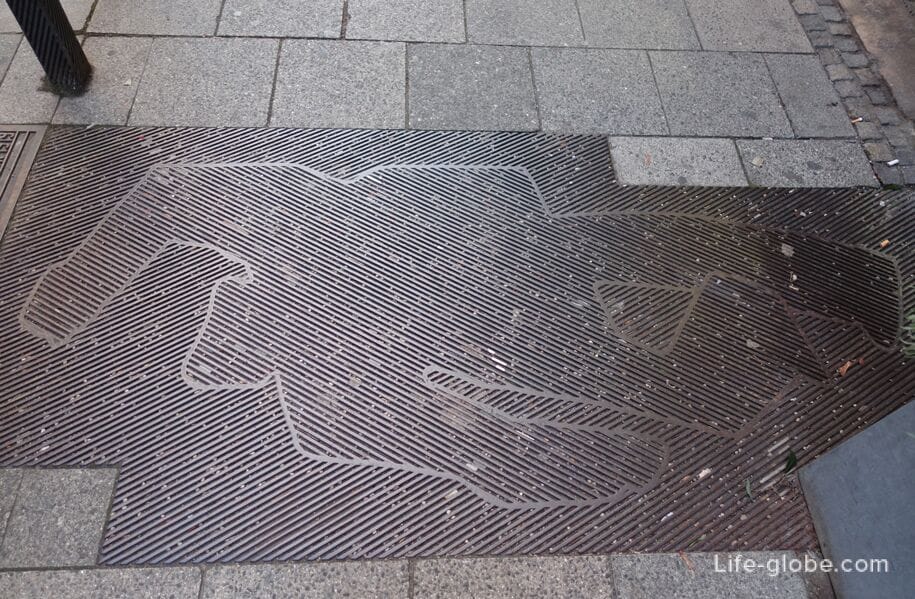
- and also: the Palace of Porcia (Palais Porcia); the building of the former Bavarian Mortgage Exchange Bank (Bayerische Hypotheken-und Wechsel-Bank); the Archbishop's Palace (Erzbischöfliches Palais) - the former Palace of Holnstein (Palais Holnstein); Sprati Palace (Palais Spreti); building of the former branch of the Royal Bank (Ehem. königliche Filialbank) and the Greek Orthodox Church of St. Salvator (St. Salvator, Salvatorkirche), designed in the late Gothic style. More about Cardinal Faulhaber Street…
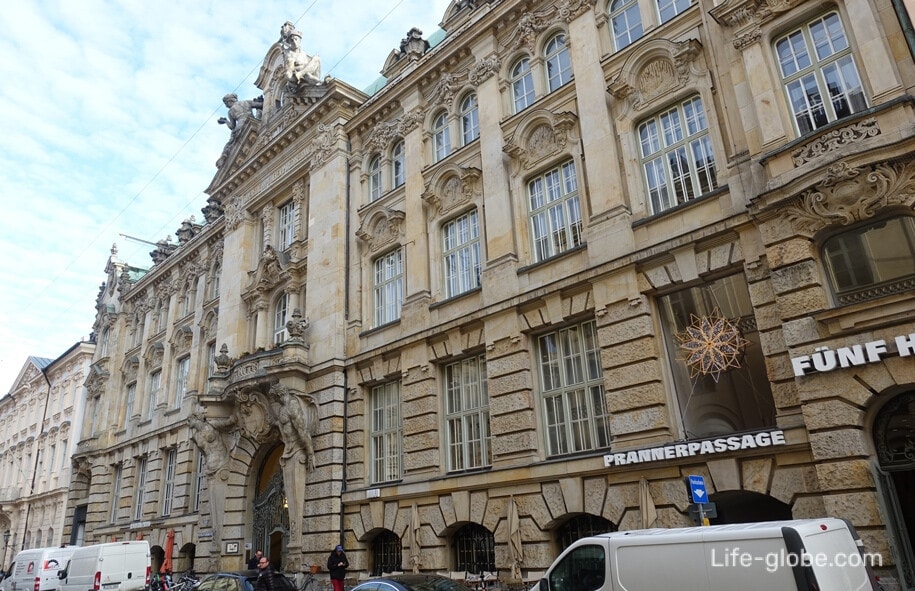

Tal Street was originally part of the Bavarian Salt Road Salzstrasse, and today is part of the old city of Munich.
Along the street are located:
- the historic bank building "Stadtsparkasse München", which was built in several stages, starting in 1889;
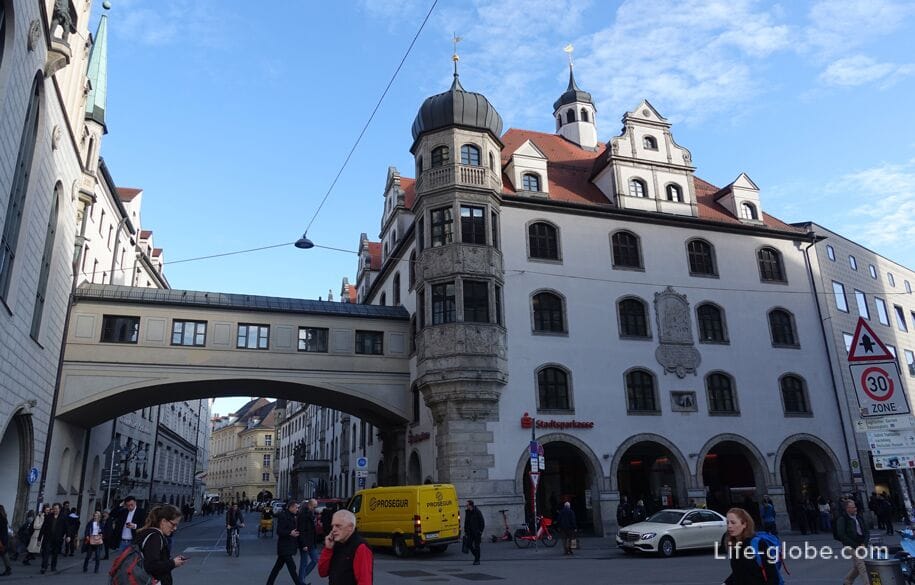
- Church of the Holy Spirit (Heiliggeistkirche) - the parish Catholic church, which is one of the oldest churches in Munich, dates back to the 13th century.;
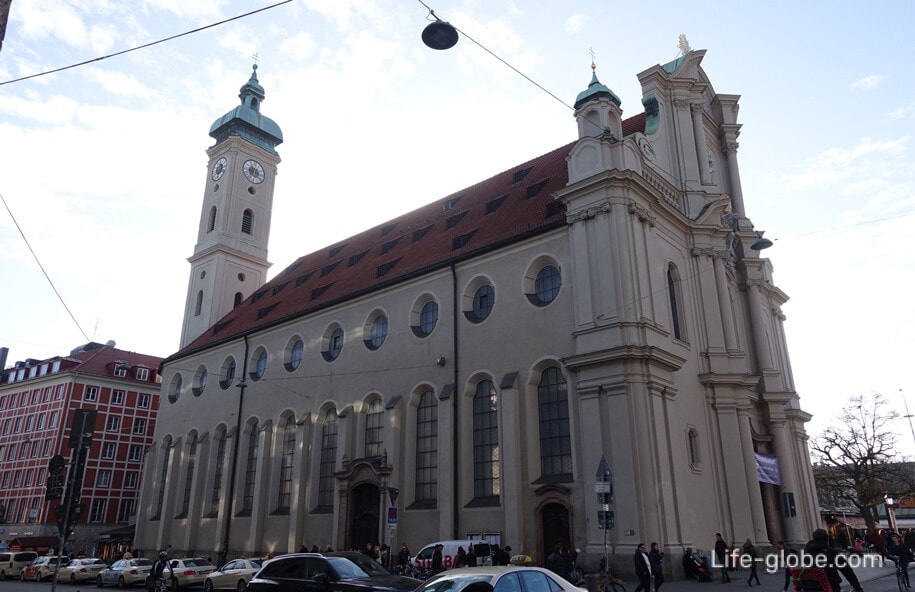
- Cold House (Kalter-Haus), which is a residential and commercial building, and with the history of which the men's clothing store "Golden 19" is closely connected;
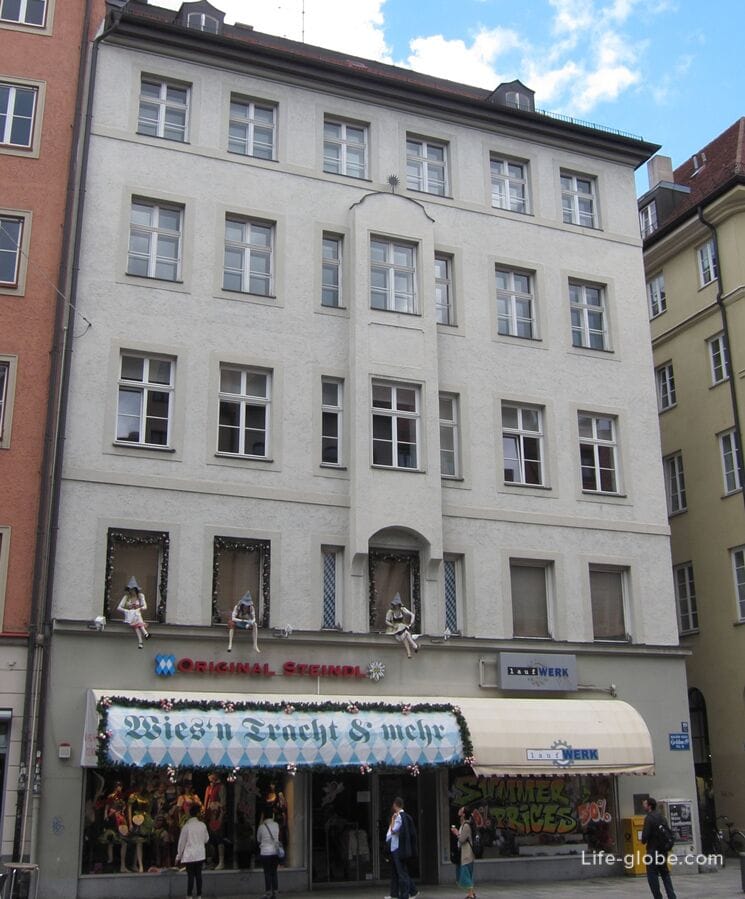
- the Sternekerbroy building (Sterneckerbräu), which is the former building of the brewery of the same name. More about Tal Street…
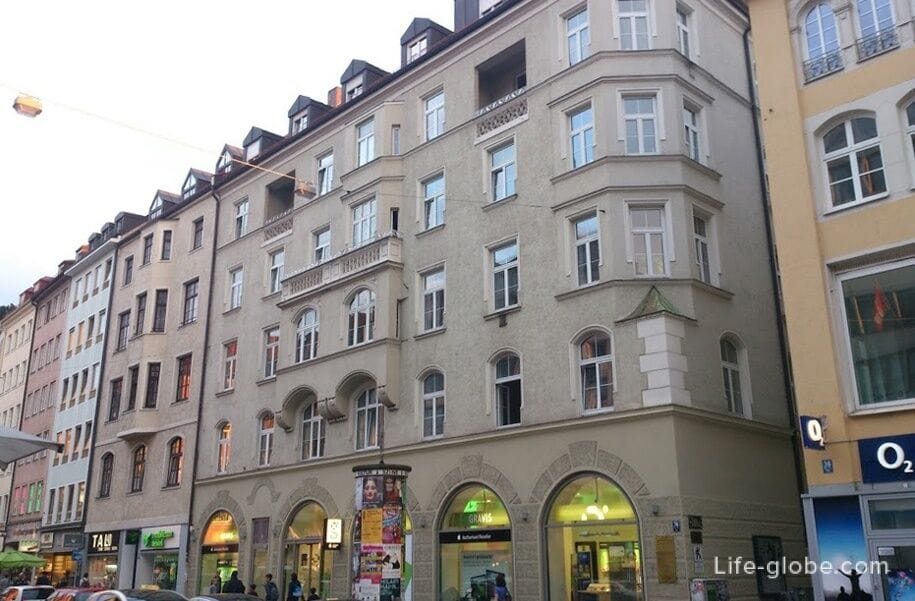
Also in the Old Town of Munich, the streets are attractive: Residences (Residenzstraße), Burgstrasse (Burgstraße), Perusastrasse (Perusastraße), Theatinerstrasse (Theatinerstraße), Orlandostrasse (Orlandostraße), Pfisterstarsse (Pfisterstraße), Falkenturmstrasse (Falkenturmstraße) et al.
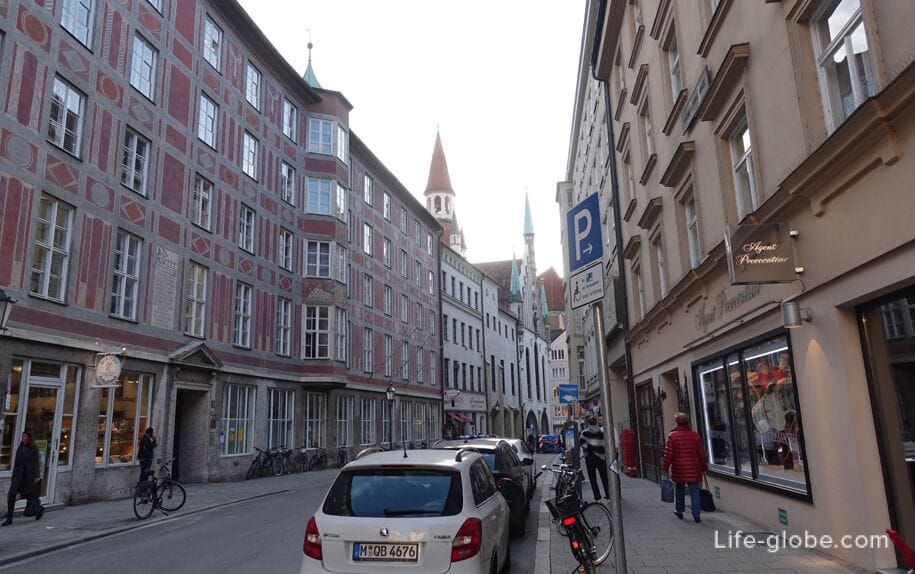

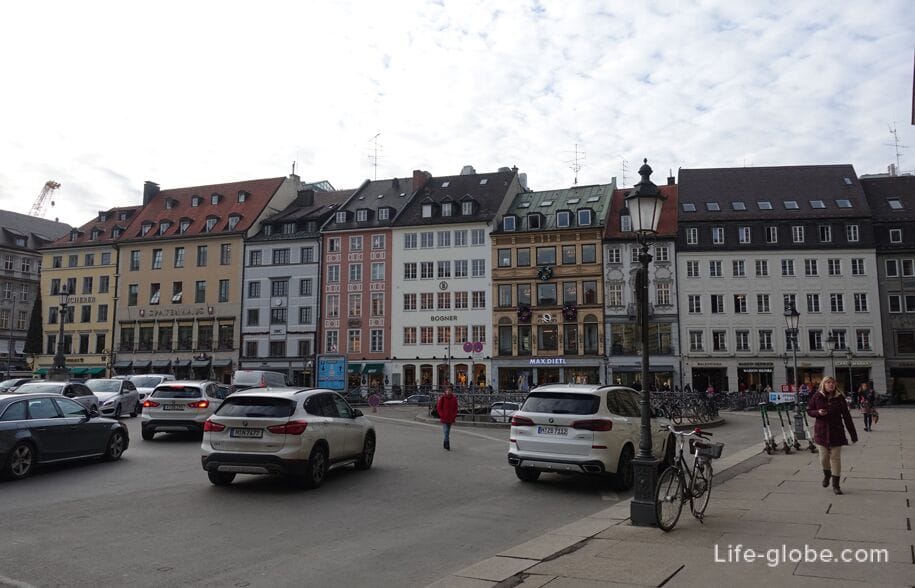
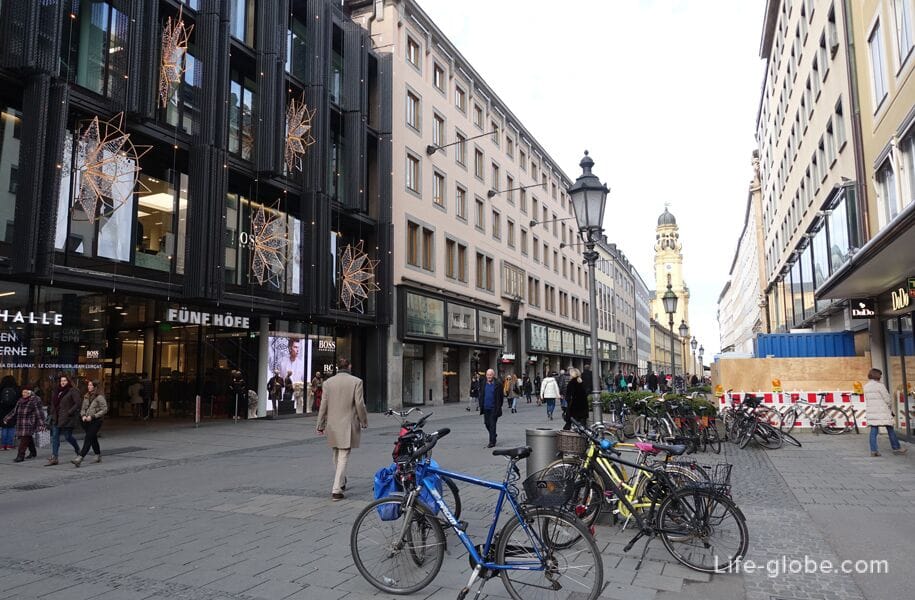
Palaces of Preysing (Palais Preysing) - former mansions that served as residences of the Preysing family.
In the Old City of Munich, there are two Preising palaces: the so-called "Oldest" and "New", because the palaces were built at different times.
"The oldest palace of Preising" (Elder Palais Preysing) it was built between 1723 and 1728 for Count Johann Maximilian IV Emanuel Graf von Preising.
It was the first Rococo palace in Munich. The exterior walls of the building were decorated with stucco.
The palace was restored after the war according to old projects.
Address of the palace: Residencestrasse, 27 (Residenzstraße). More about the old Preising Palace…
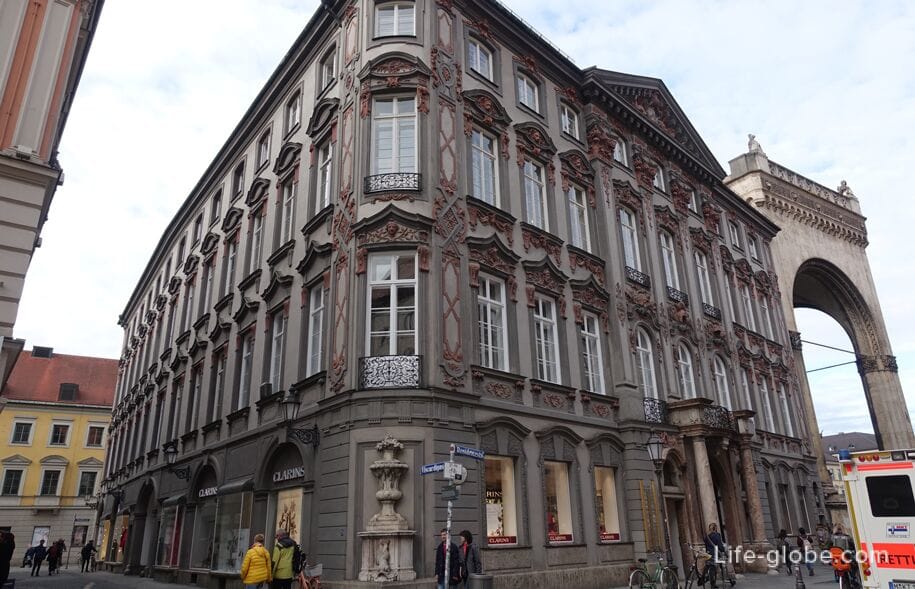
"The New Palace of Preising" (Palais Neuhaus-Preysing / дворец Нейхауз-Прейзинг) it was built around 1735 and now has one of the few historical facades preserved on Prannerstrasse.
Address of the palace: Prannerstrasse, 2 (Prannerstraße).
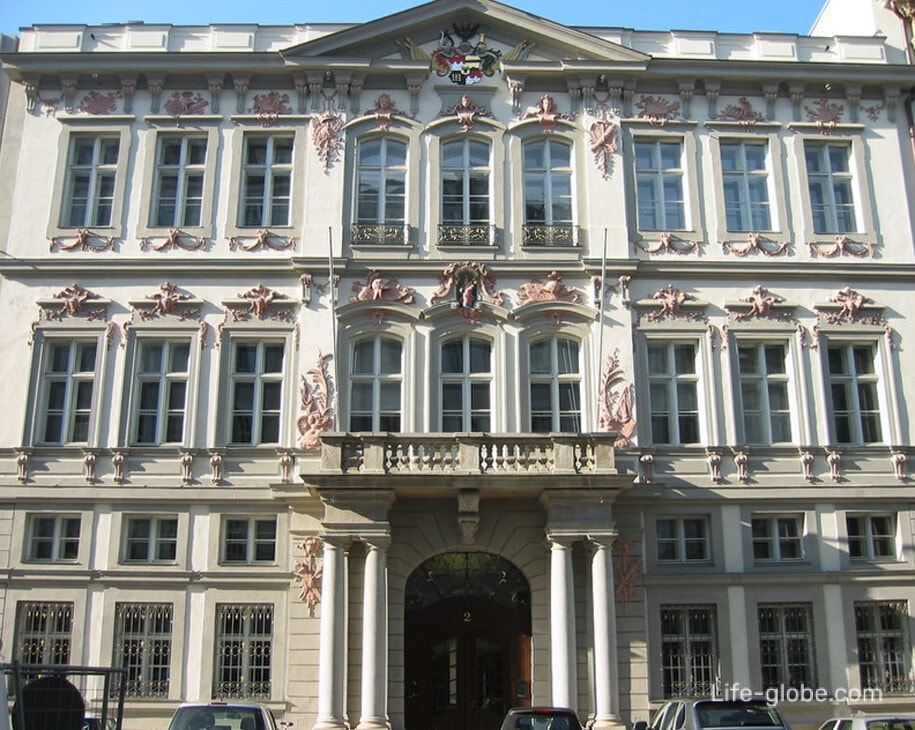
"Druckerbergergassl" ("Drückebergergassl") - pressure evasion lane or Shirker Lane.
During the Nazi regime, the Hall of the Bavarian Generals of the Feldhernhalle, located on the Odeonsplatz, was the focus of national Socialist propaganda, and a memorial plaque was placed on its wall. Everyone passing by the board was required to salute in the Nazi salute. To avoid this ceremony, many passers-by walked around the rear of the Feldhernhalle, thus capturing and bypassing the old Preising Palace, which is adjacent to the Feldhernhalle.
Today, this small street, once a detour, is called the Viscardigasse. In the mid-90s, a wavy strip of golden-colored paving slabs was installed on the Vizcardigasse in memory of the civil resistance and it is called "Druckerbergergassl".
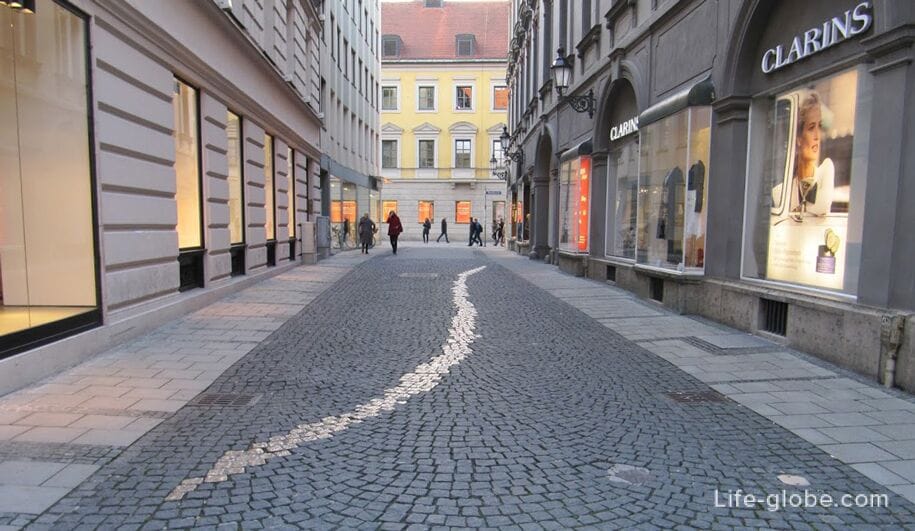
The Renaissance-style building, which originally served as the Ducal stables and art collections of Albert V, was erected in 1563 to replace the medieval houses. The building was later converted into the main mint.
The building has a Renaissance courtyard, called the "Old Coin" (Alte Munze), in which three rows of arcades are notable, one above the other.
Address of the old mint: Hofgraben street, 4.
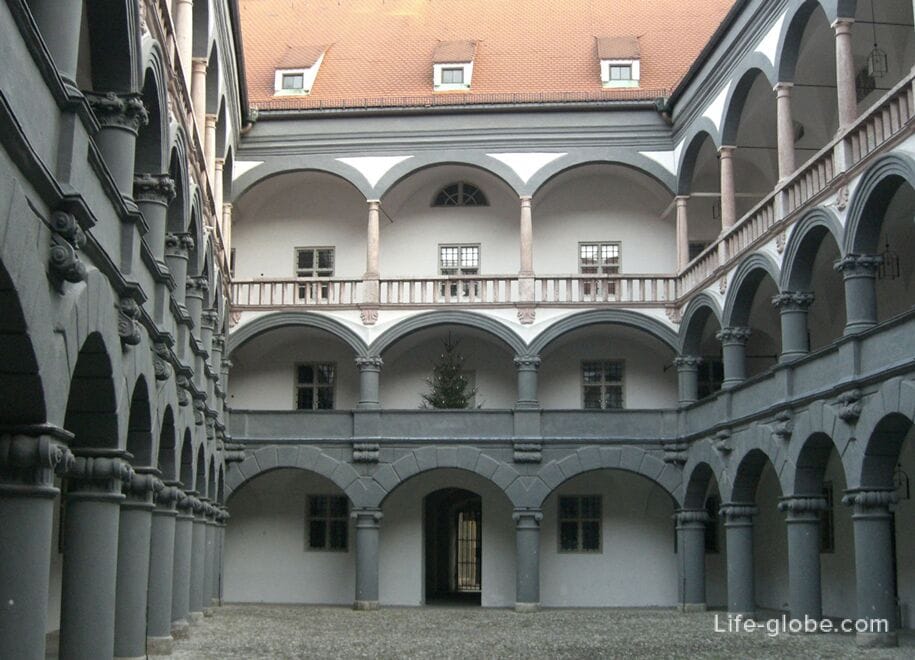
The Church of All Saints on the Cross (Allerheiligenkirche am Kreuz) was originally the cemetery church of the parish of St. Peter.
In 1485, the shrine was consecrated. A special feature of the church was its orientation to the south.
During the history of the church was rebuilt and expanded. After the damage caused during the Second World War, the church was rebuilt in a reduced form.
The church is located in the southern part of the old town of Munich, at : Kreuzstrasse 10 (Kreuzstraße). More about the Church of All Saints on the Cross…
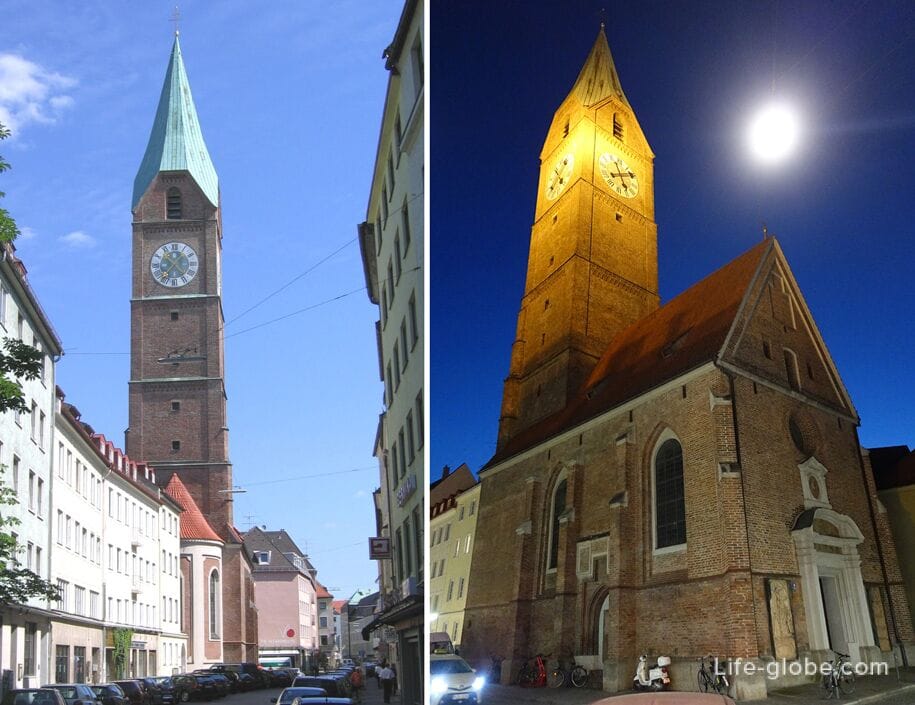
Radspielerhaus - the former palace of Rechberg (Palais Rechberg).
The Baroque palace was built in 1678 and was a complex that was later modified and acquired the style of early classicism.
In 1827-1828, Heinrich Heine lived in the house.
The house is named after Joseph Radspieler, who bought the house in 1848 and opened a furniture workshop in it.
Address Radspielerhaus: Hackenstrasse, 7 (Hackenstraße). More about Radspielerhaus…
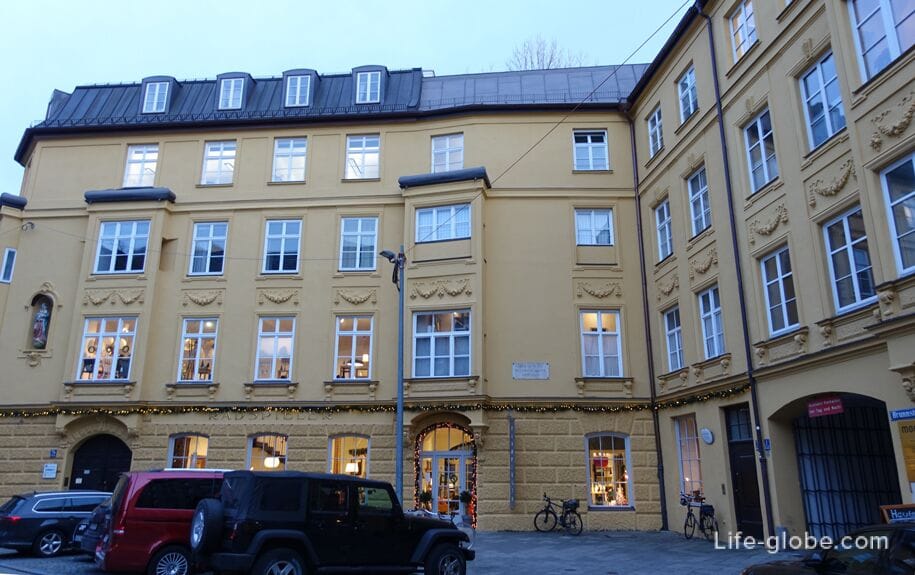
The Hundskugel is one of the oldest surviving town houses in Munich.
On the house you can see the date "1440".
The building housed a traditional Munich tavern (restaurant) until 2011. It was visited by Heinrich Heine.
Address of the house: Hottenstrasse 18. More about Hundskugel House…

The Prince Karl's Palace (Prinz-Carl-Palais-Brunnen) was built in the early Classicist style in 1804-1806 as a mansion for the Abbot Pierre de Salabert.
In 1807, Maximilian I purchased the building. In 1825, his son Ludwig I gave the building to his brother Prince Karl. After Charles ' death, the palace served as the seat of diplomatic missions for Austria-Hungary from 1876, and then became the residence of the Bavarian Prime ministers in 1924.
Address of the palace: Koniginstrasse, 1 (Königinstraße).

The Promenadeplatz is a public square located in the northwestern part of the historic center of Munich.
In German, "Promenadeplatz" means "Walking square".
In the center of the square are significant monuments and statues, including: the monument to Count von Montgelas, which is more than 6 meters high and made of aluminum; the statue of Orlando di Lasso, which, since the end of June 2009 to this day, is also a memorial and a place of pilgrimage for fans of pop musician Michael Jackson.
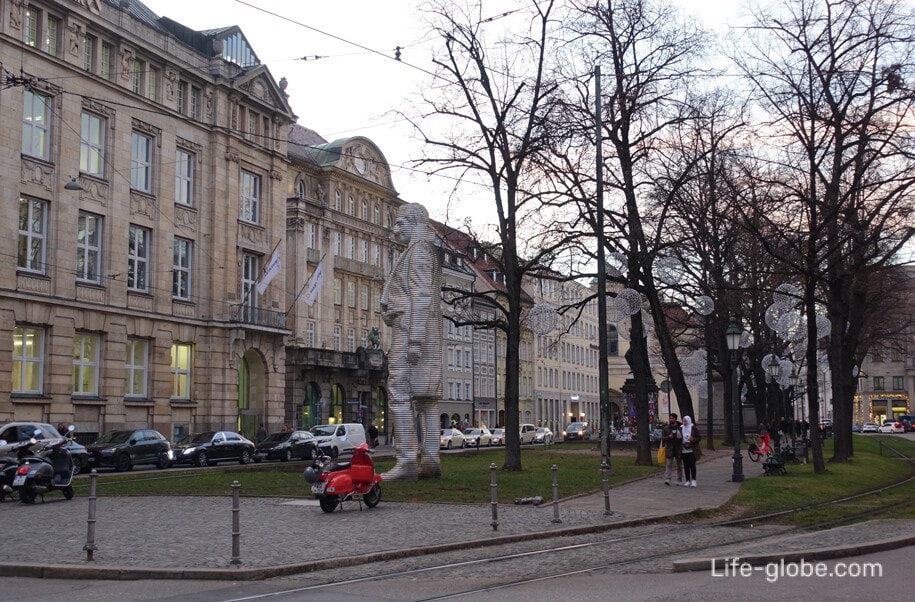
Historical buildings are located around the square: Parkus house (Parcus House); former Carmelite church; Gunetzreiner House (Gunetzrhainerhaus); Ballin House (Ballin-Haus) and historical 5-star Bayerischer Hof Hotel, which includes the Montgela Palace and the private Comedy theater in Bavaria Hof (Komödie im Bayerischen Hof). Learn more about Promenadeplatz…
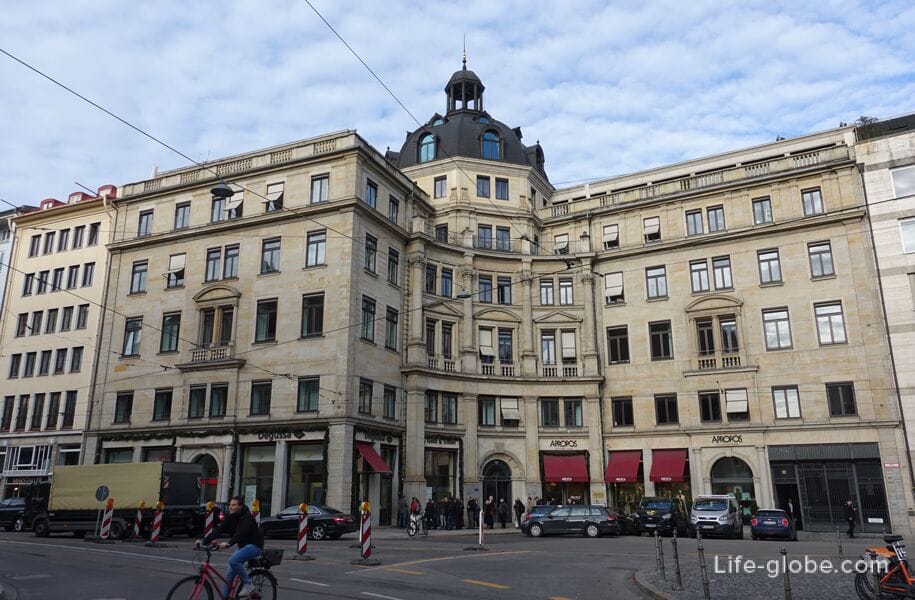

The Church of the Holy Trinity or Trinity Church (Dreifaltigkeitskirche) was built in the late Baroque style from 1711 to 1718.
It is the only church in Munich's old town that was not destroyed during World War II.
Inside the church there is a significant work of the German artist and architect Kosmas Damian Azam-a painting of the ceiling in the dome.
Church address: Pacellishtrasse, 6 (Pacellistraße). More about Holy Trinity Church…

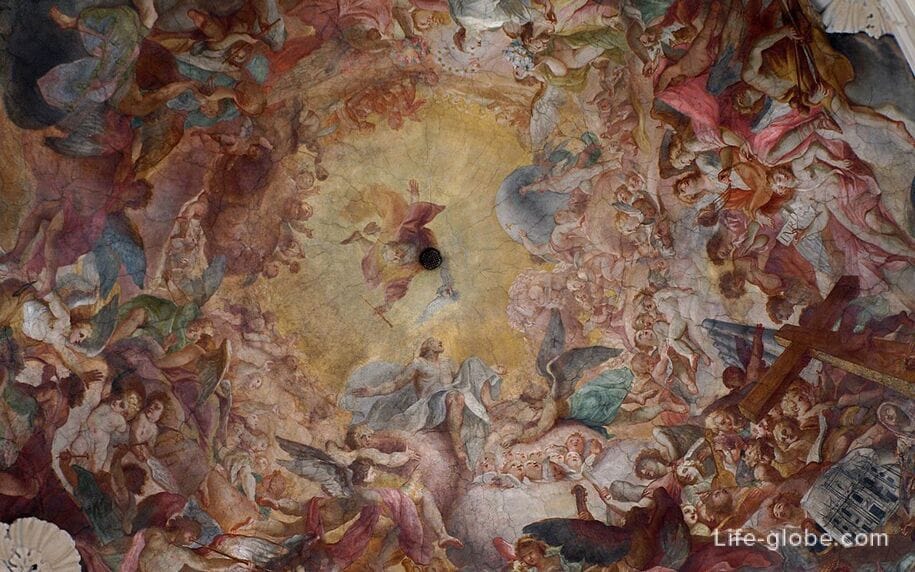
Maxburg is the only remaining part of the former residence of Duke Maximilian Philipp Hieronymus.
During the Second World War, the building was almost completely destroyed. In its place, a complex of administrative and commercial buildings was built.
The building and the adjacent tower have a single ensemble and are located at the address: Pacellishtrasse, 5 (Pacellistraße). More about Maxburg…
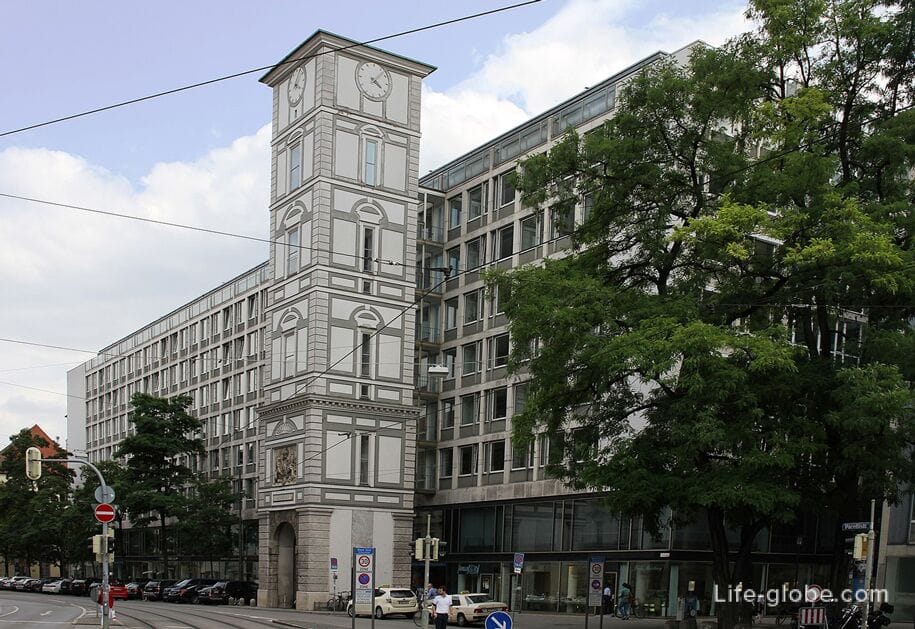
The small square of Sebastian (Sebastiansplatz), more like a small street, is located in the south-eastern part of the old town.
The north side of the square is characterized by 3-and 4-storey buildings-former townhouses (Neo-Renaissance structure), some of which have survived to this day and mostly date back to 1761-1890.
It is the oldest enclosed row of houses in Munich. More about Sebastian Square…
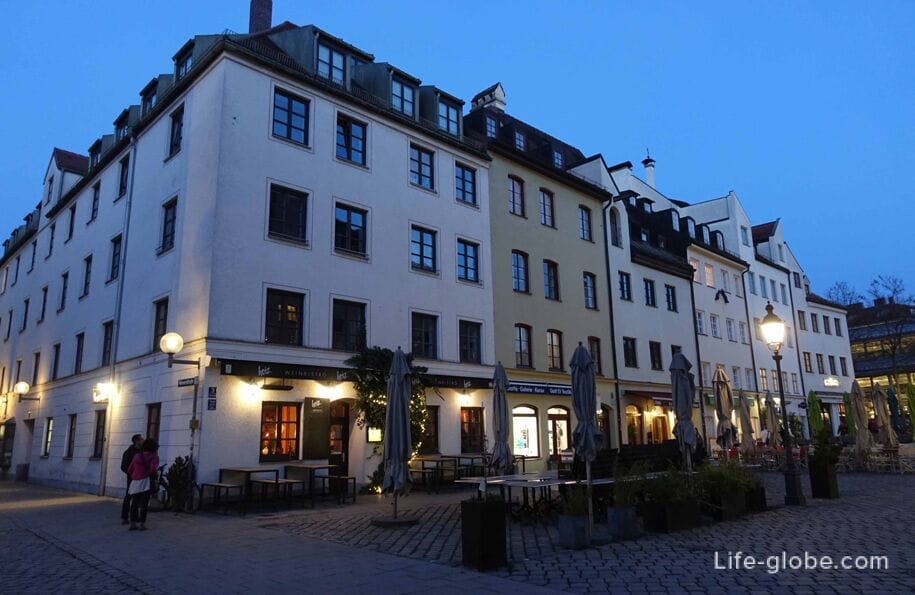
The old Catholic Church of St. Willibrord (Alt-Kath. Kirche St. Willibrord) - formerly the English Church of St. George, is a small neo-Gothic raw brick building built by Heinrich Bergthold from brick in 1911-1913.
Today, the architectural style of the church with exposed brick walls resembles English village churches. The interior of the church is simple. There is an organ in the church.
The church is located on the south-eastern edge of the old town, in the area of the former city fortifications, at the address: Blumenstarsse, 36 (Blumenstraße). More about St. Willibrord's Church…
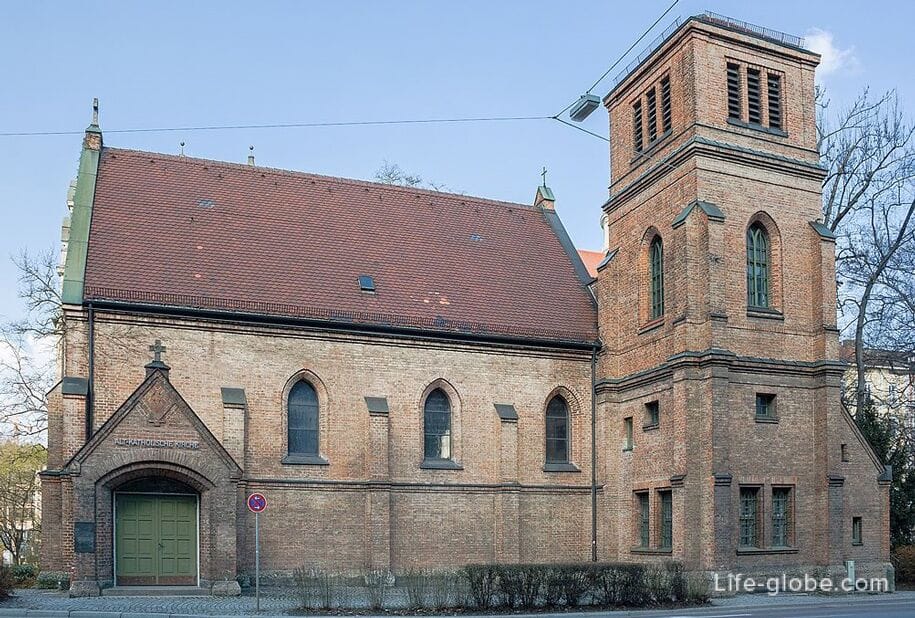
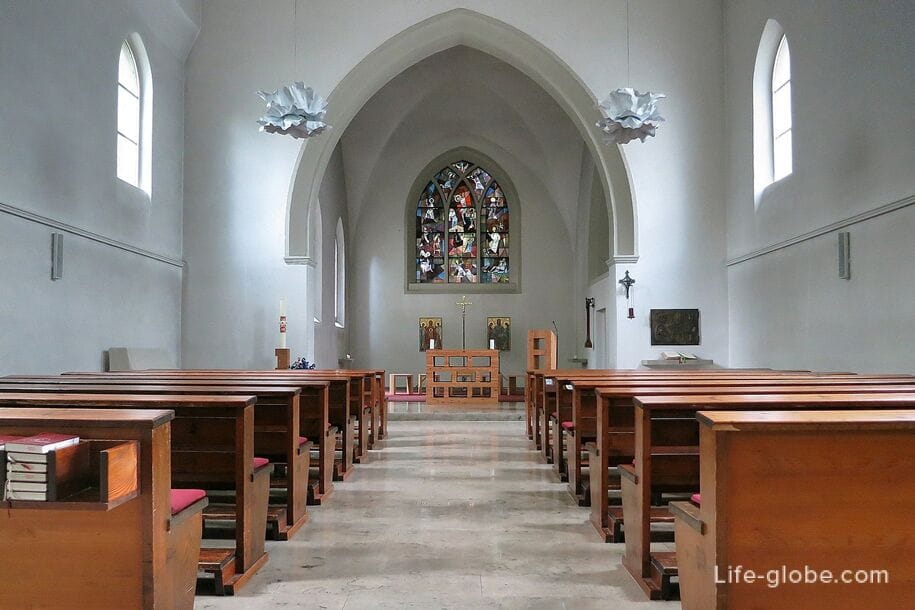
Square Am Kosttor or literally translated from German: "At the gate", was originally the place where one of the gates of the city wall of medieval Munich was located.
The "Wolf Fountain", also known as the "Little Red Riding Hood" fountain (Wolfsbrunnen), created in 1904, is notable on the square.
The fountain is called "Little Red Riding Hood", because it is decorated with a group of figures based on the famous fairy tale. Learn more about Am Kostor Square and the fountain…
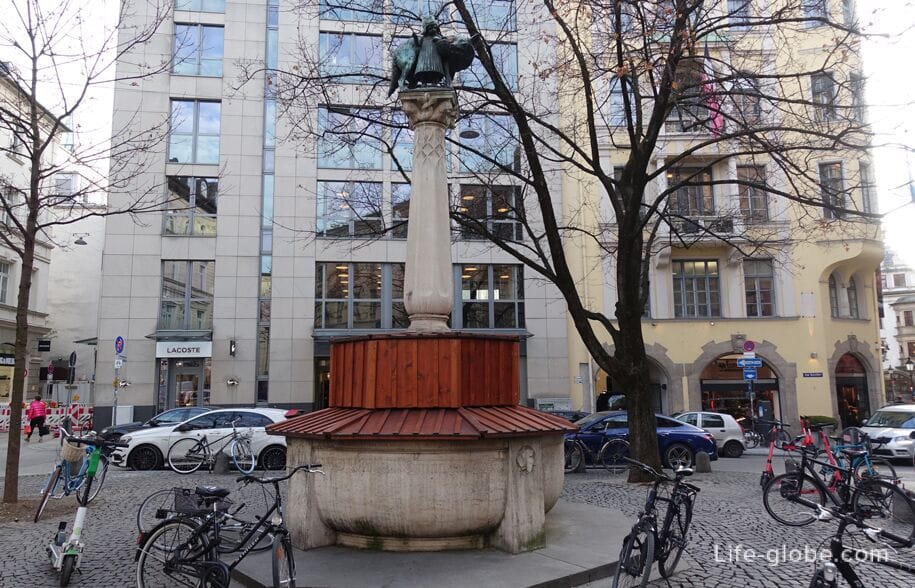
On the eve of Christmas and New Year, one of the most visited places in Munich, including in the old city, are Christmas fairs - when tents and kiosks are set up in squares and streets, from which there is a lively trade in drinks, including warming mulled wine, food (sausages, burgers, cabbage, etc.), snacks, sweets, food, souvenirs and Christmas goods.
There are 5 Christmas markets and one outdoor ice rink in Munich's old town:
- Marienplatz is home to the Christkindlmarkt Christmas market, which is the main and one of the most popular Christmas markets in Munich.
A Christmas tree is set up on the square, and tents and kiosks extend beyond the Marienplatz and are also placed on nearby streets: Kaufingerstrasse, Neuhauserstrasse, Rindermarkt Street and Square, Rosenstrasse, at the beginning of Sendlinger Street and in the Main courtyard of the New Town Hall (Der Prunkhof);

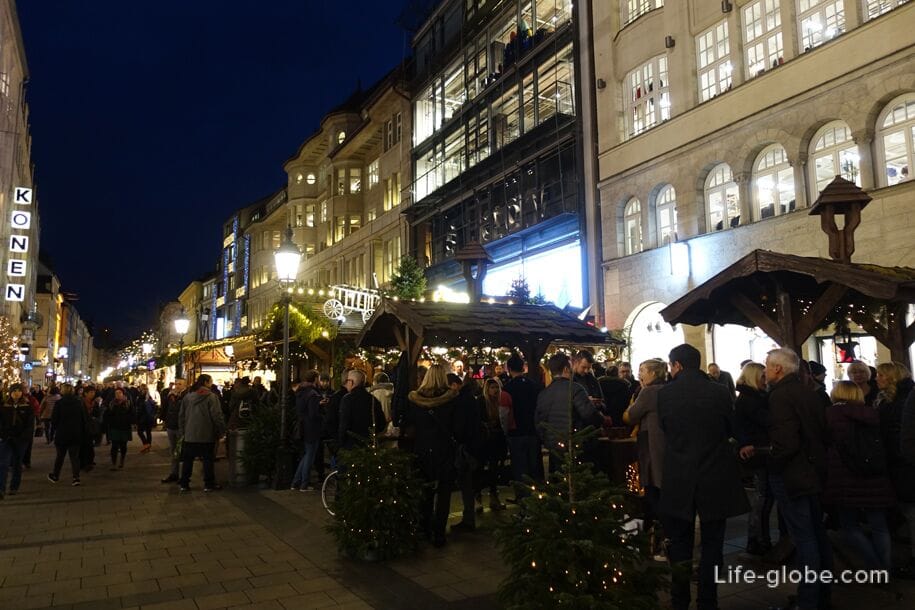
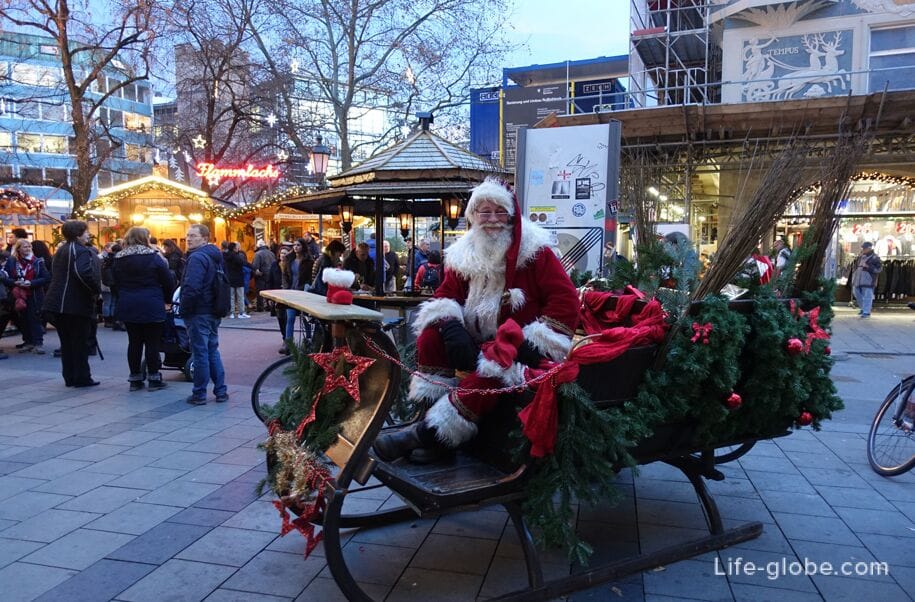
- around the Sendling Gate is a small and cozy Christmas market;

- in the courtyard of the Izar Gate;

- in the Imperial Court (Kaiserhof) Munich Residence;
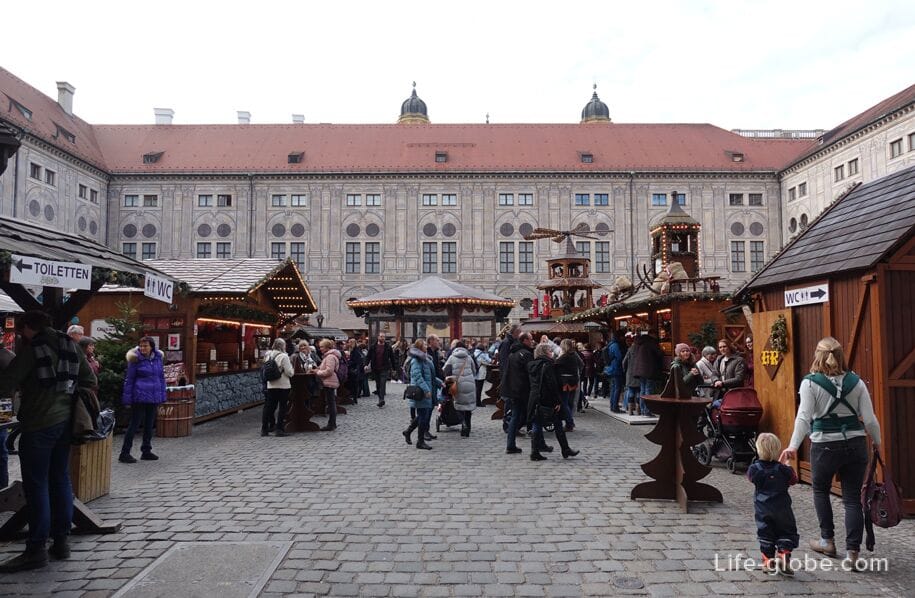
- On the Viktualienmarkt, additional tents are being set up that offer Christmas goods such as delicacies, mulled wine and handmade products. Near the cafe "Nymphenburg" there is a children's carousel. The fair lasts until the first days of January-approximately 04.01;
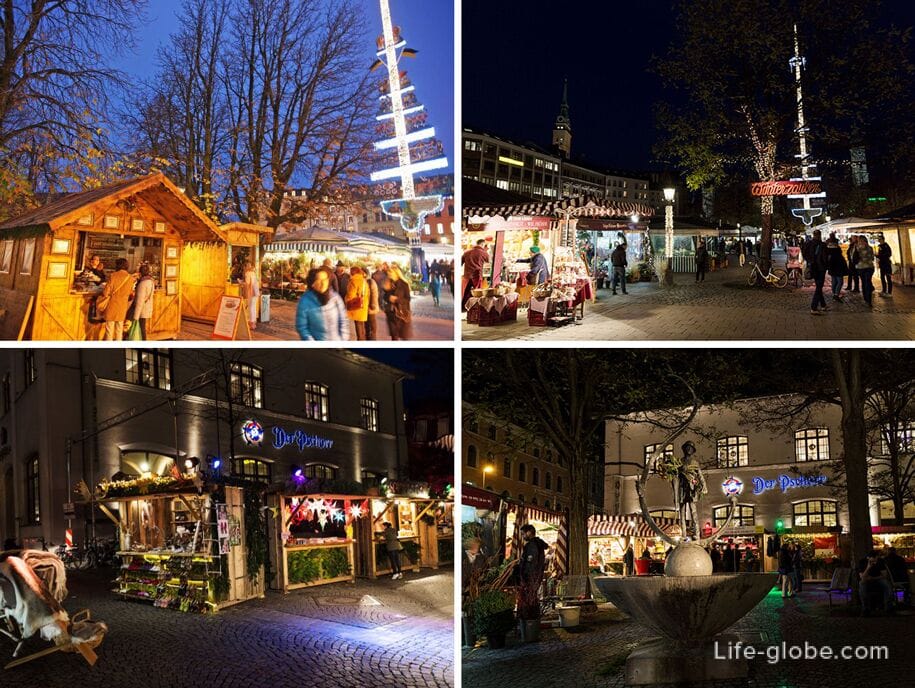
- From about mid-November to mid-January, an open-air skating rink with ice skates is open on Karlsplatz Square. There is also a bar with beer, warming mulled wine and snacks.

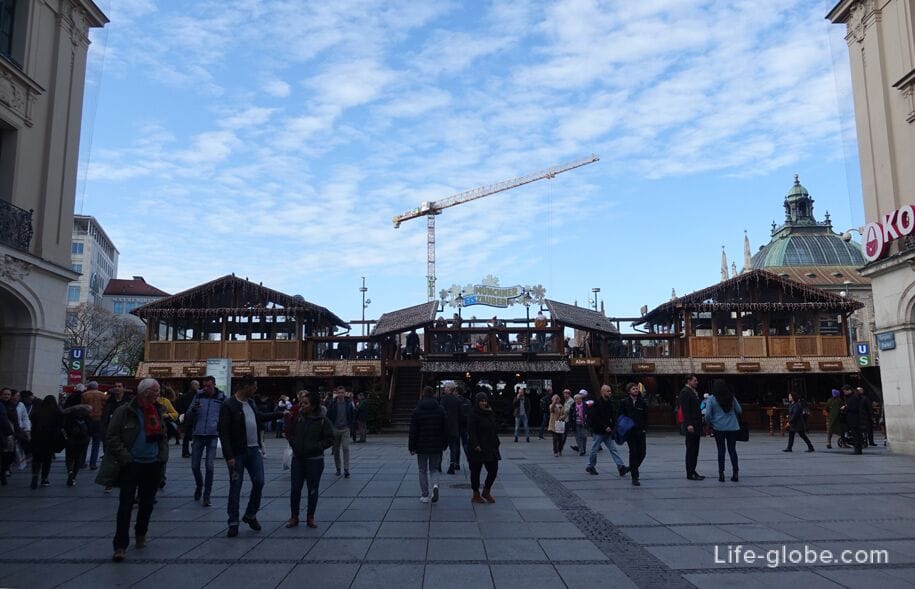
There are three viewing platforms in Munich's old town:
- at the top of the tower of the New Town Hall is a circular open observation deck, giving a 360-degree view of Munich;
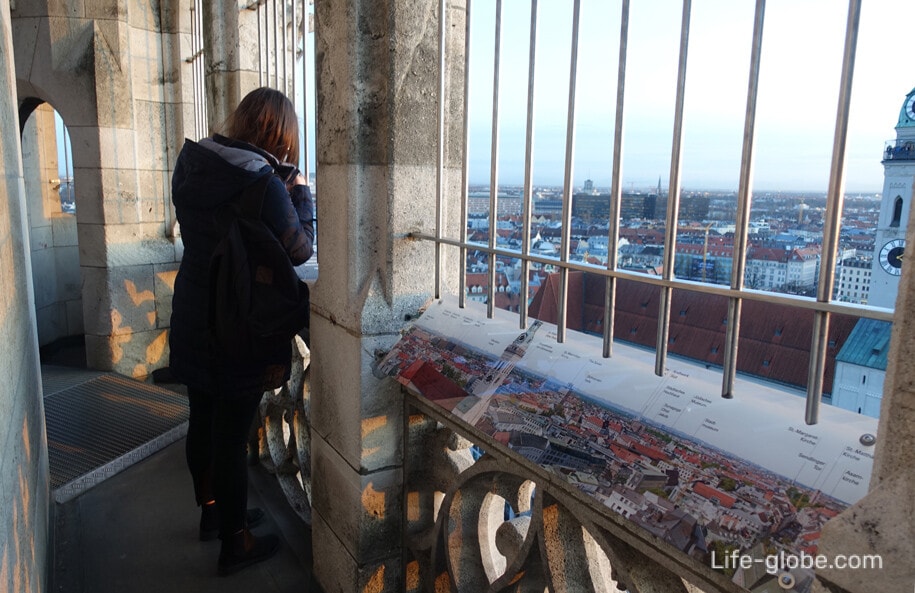
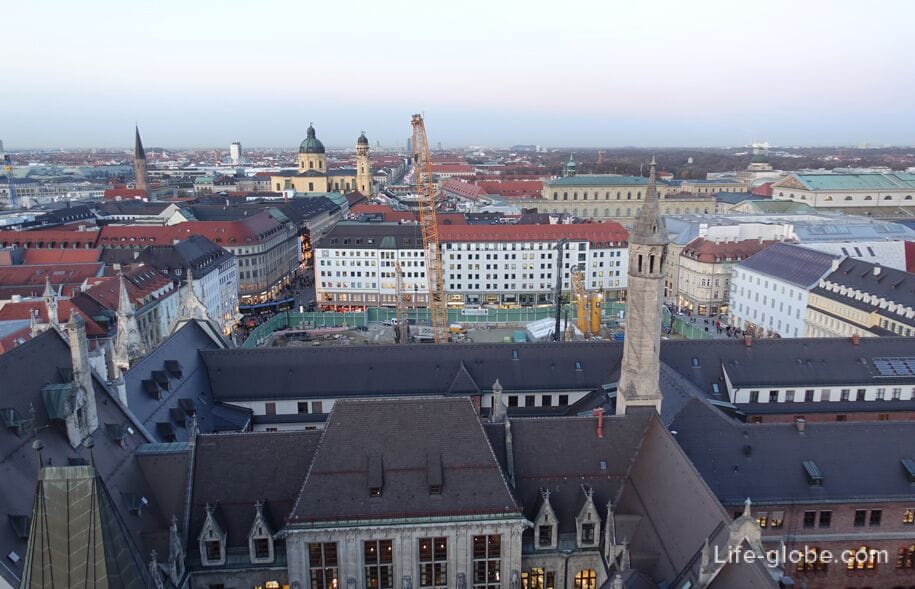
- in the tower of the Church of St. Peter (at an altitude of 56 meters) - an open observation deck, offering a 360-degree panoramic view;
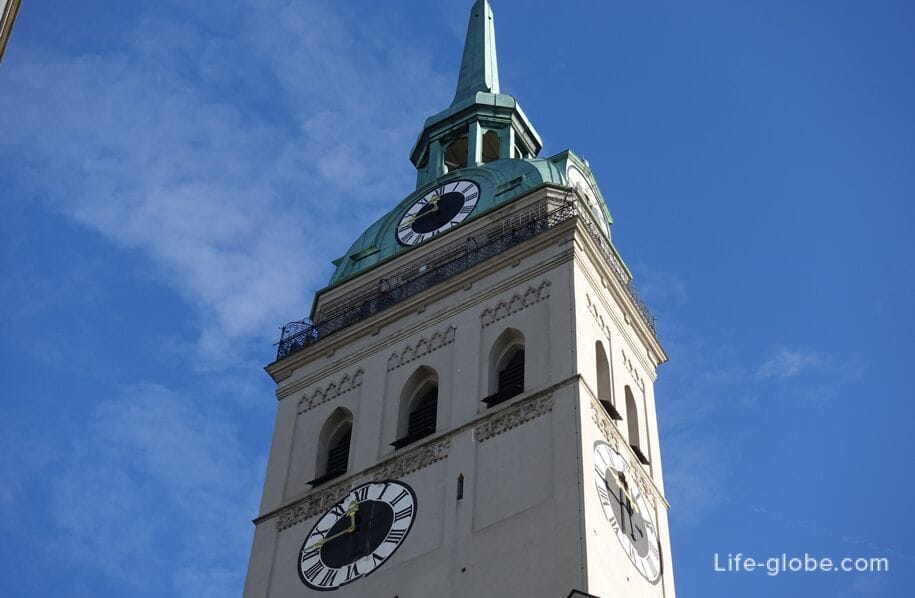
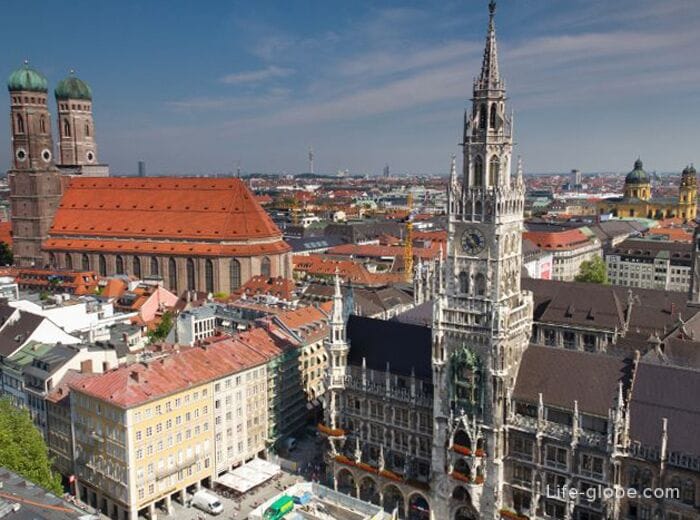
- at the top of the south tower of the Frauenkirche is an observation deck, giving panoramic views of the city and the surrounding area..
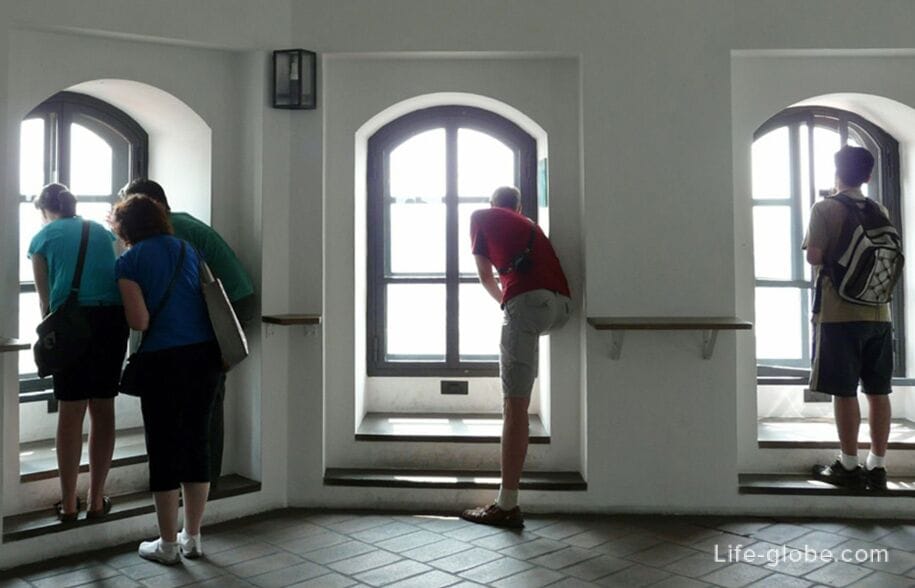
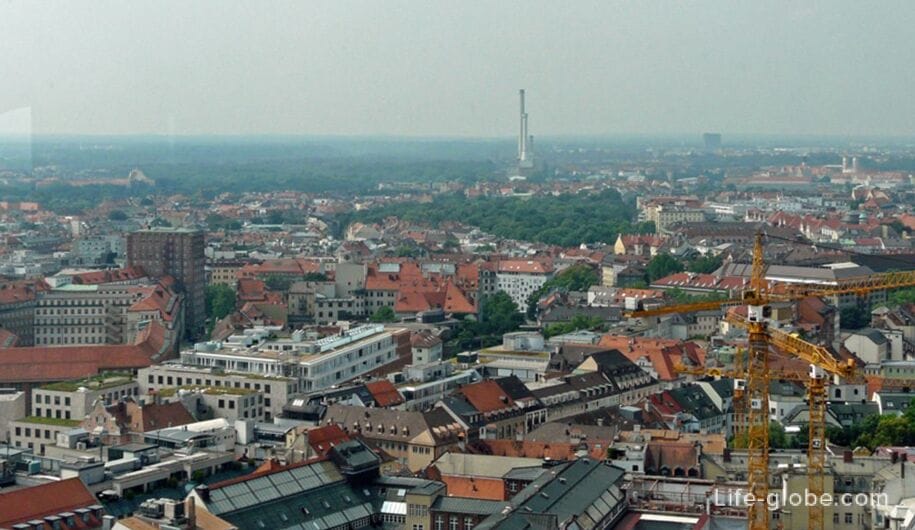
Munich's old town is home to many museums and art galleries, the most visited of which are:
- Museums in the Munich Residence: the Residence Museum, the Treasury, the Munich State Coin Collection, and the Cuvillier Theater;
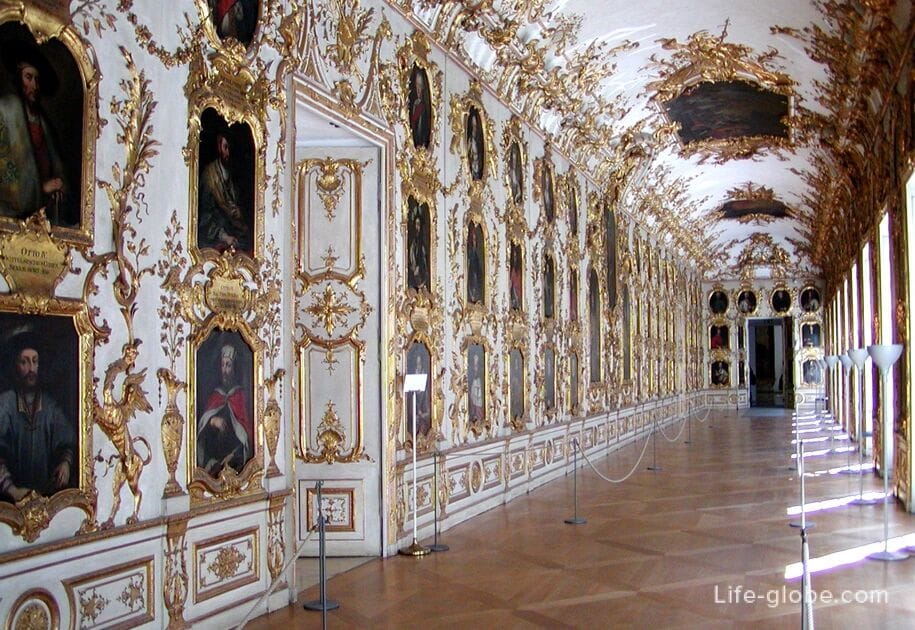
- in a Gothic cellar with a vaulted ceiling of the Old Courtyard. Under the infocenter is an exhibition with a multimedia presentation that introduces the history of the Old Court and the medieval history of the city of Munich under the management of the Wittelsbach family;

- Munich City Museum, which houses both permanent and temporary exhibitions.
Part of the Munich City Museum is the Museum of the History of Cinema, which has existed since 1963 and has a cinema for 165 people;

- The Jewish Museum of Munich (Jüdisches Museum München), an integral part of the Jewish Center and whose concept is to transmit the diversity of Jewish history, art and culture to the present day;
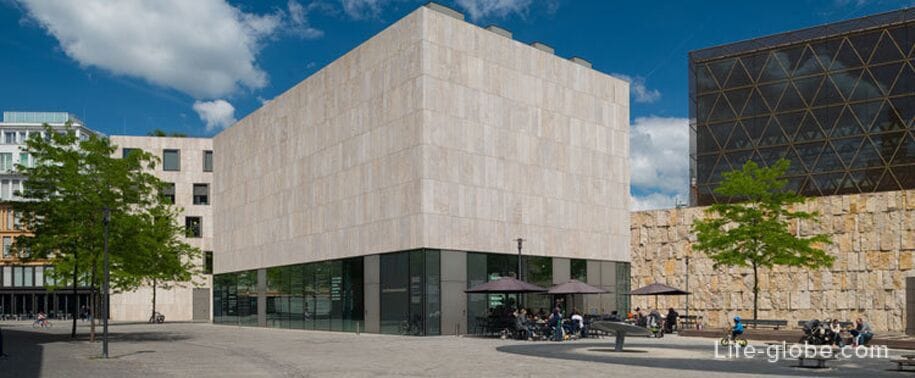
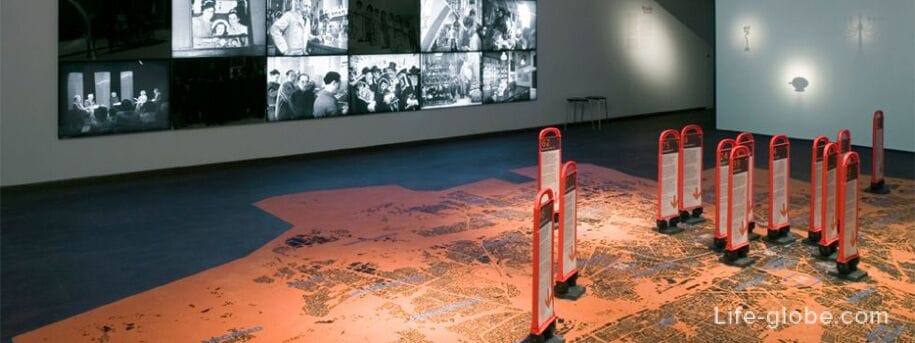
- Toy Museum (Spielzeugmuseum), located in the tower of the Old Town Hall and showcases the development of toys over four centuries;
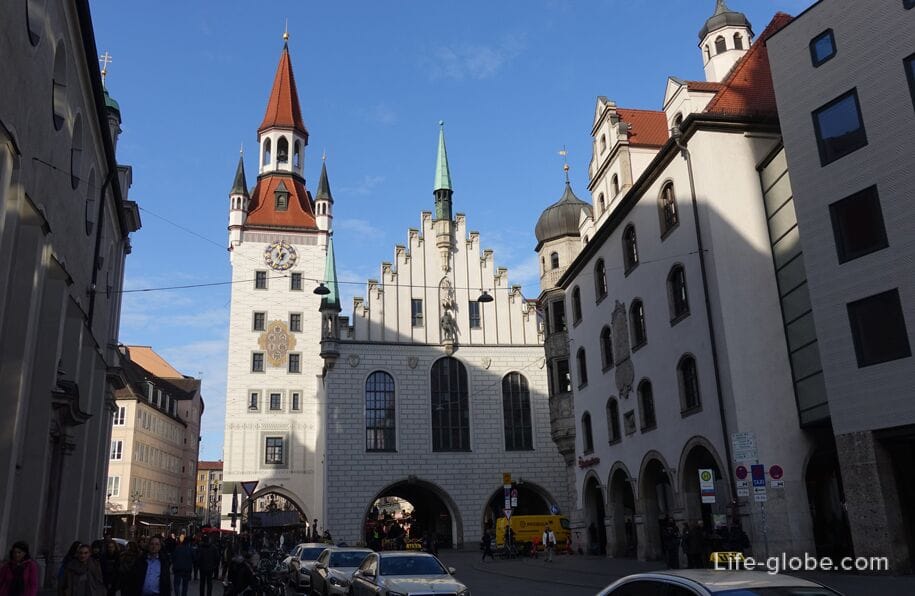
- the hall of the exhibition center in the New Town Hall, which is an art gallery (Rathausgalerie) and which regularly hosts various exhibitions, thematically based on the city of Munich, its history and inhabitants;

- beer and Oktoberfest Museum (Bier-und Oktoberfestmuseum) with foam tasting and a restaurant.
The museum is located in a historic house - one of the oldest Munich townhouses, whose history dates back to 1340.
The museum's exhibition tells about the historical building itself, as well as about beer, production, the law on the purity of the drink, the history of foam from the parish to the monasteries, as well as the development and history of the Munich Oktoberfest.
Address of the museum: Sternekergasse street, 2 (Sterneckergasse). More about the Beer and Oktoberfest Museum...
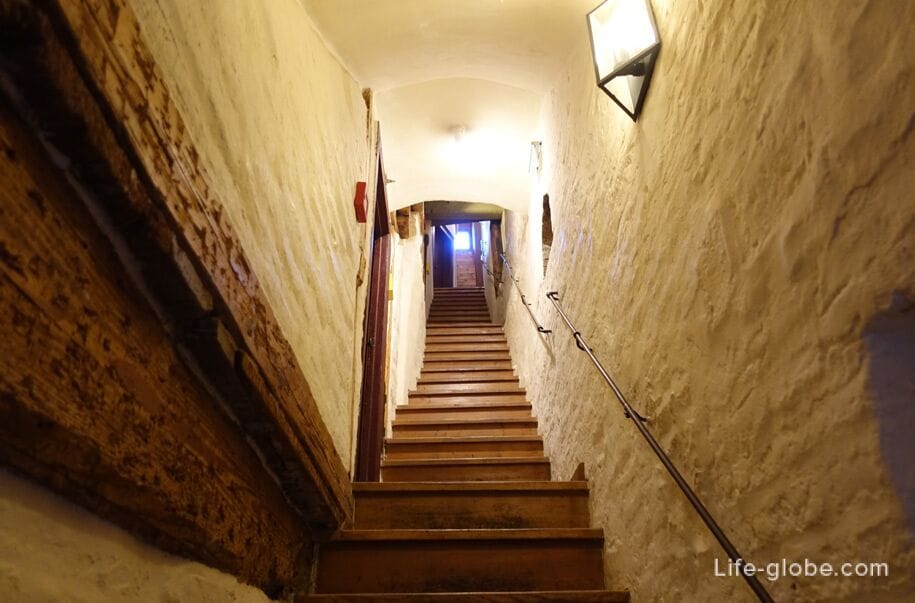
- The Karl Valentine Museum (Valentin Karlstadt Musäum), located in the side towers of the Isar Gate;
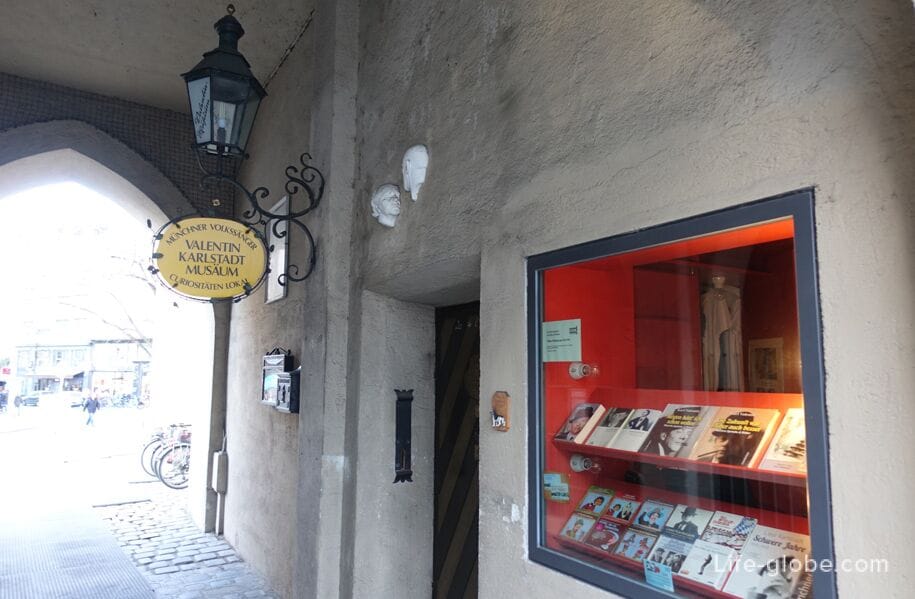
- German Museum of Hunting and Fishing (Deutsches Jagd und Fischereimuseum), which exhibits stuffed wild animals and objects related to the history of hunting and fishing in Germany for several centuries;
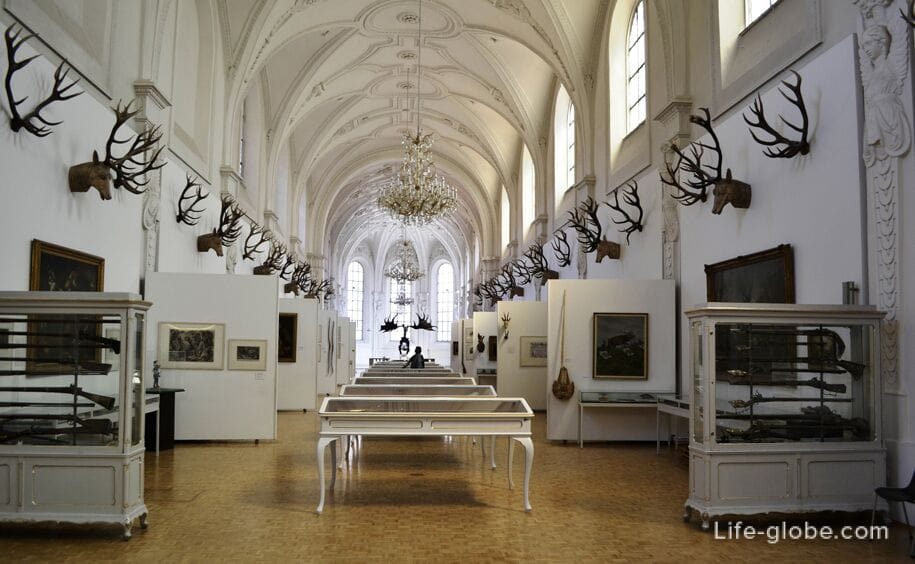
- On the lower floor, behind the altar of the Burghersaal Church, there are museum rooms with memorabilia of the Blessed Father Rupert Mayer and various objects, images and works of art of the Congregation of the Male Community "Annunciation»;
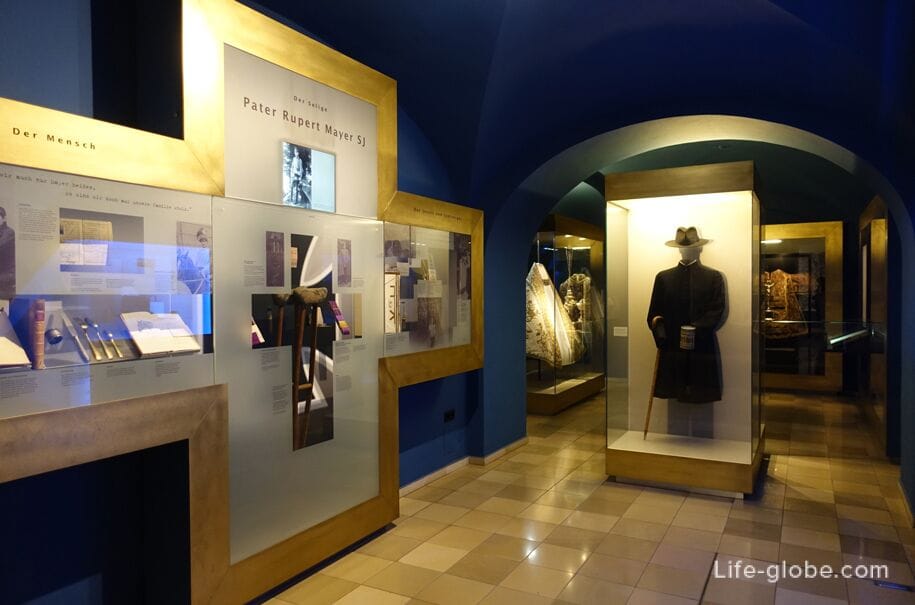
- in the gallery of the Main Hall of the Hofbroyhaus beer restaurant, there is an exhibition where you can get acquainted with the history of the brewery and the Hofbroy beer hall;
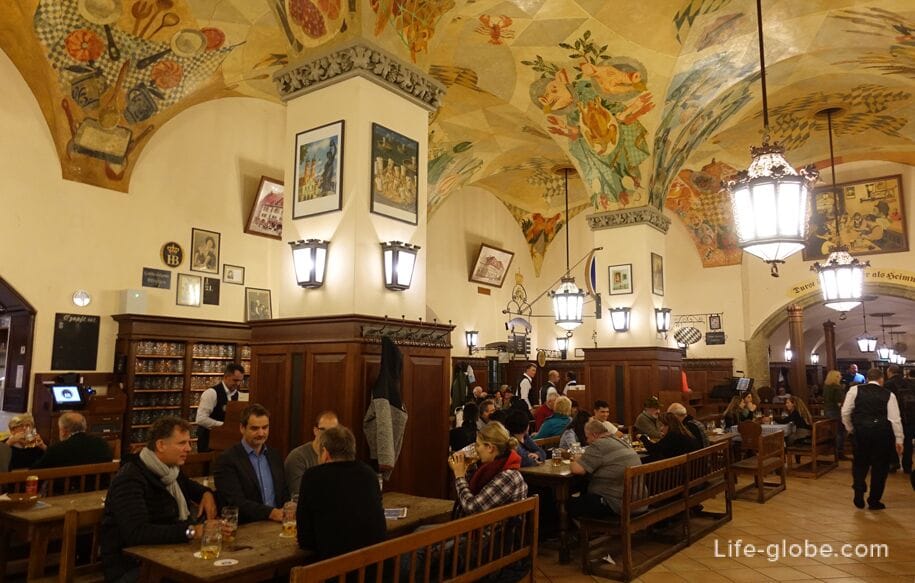
- art gallery and Museum of the German Theater, located in the inner part of the arcade of the Hofgarten Park;
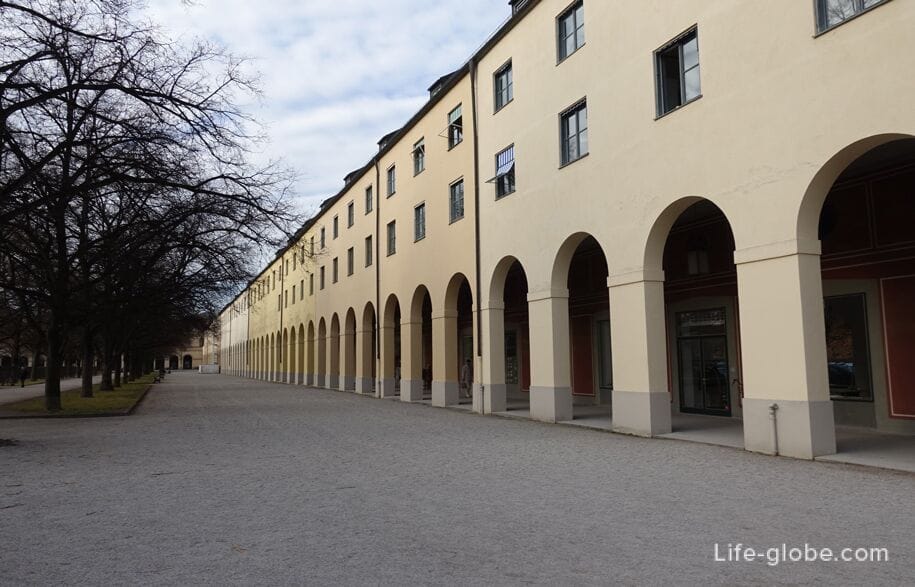
- house of art (Kunsthalle München), it is an exhibition space where various rotating exhibitions are held, including those from the fields of painting, photography and design. The House of Art is located in the complex "Five Yards", at the address: Theatinerstraße, 8. Website: kunsthalle-muc;

- Muka Museum of Urban and Contemporary Art, located at 12 Hotterstrasse (Hotterstraße). Museum website: muca.
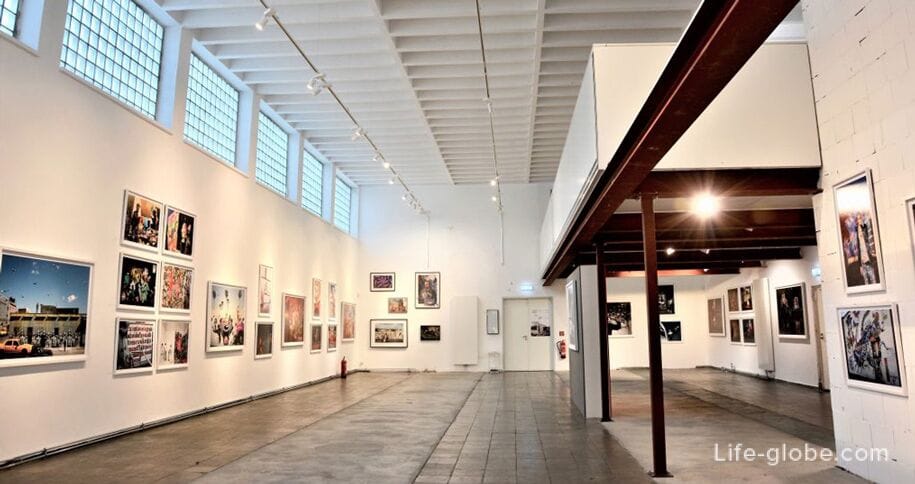
Within the historic old town there are many accommodation facilities, ranging from 5-star hotels to guest houses and apartments (separate apartments with all amenities).
For example:
- The 5-star Bayerischer Hof Hotel features 5 restaurants, 6 bars and a spa area with a rooftop pool. Link to the hotel
- Vier Jahreszeiten Kempinski München 5-star Hotel with a restaurant, a bar, a spa with a swimming pool and panoramic views of the city. Link to the hotel
- 4-star Platzl Hotel-Superior, it offers a free spa, a 16th-century restaurant and soundproofed rooms. The hotel is located near the Hofbroyhaus beer garden. Link to the hotel
- Torbräu 4-star Hotel with a restaurant, free Wi-Fi and a daily buffet breakfast included in the room rate. Link to the hotel
- The 3-star Mercure Hotel München Altstadt, with free high-speed Wi-Fi and a buffet breakfast included in the room rate. The hotel is located in a quiet neighborhood in the center of the old town. Link to the hotel
- BEYOND by Geisel Hotel with a seating area spanning two floors, the rooms and suites offer panoramic views of the New Town Hall or Rindermarkt Square. Link to the hotel
- hotel Louis featuring a Japanese restaurant, bar and rooms with a French balcony. Link to the hotel
All accommodation facilities in Munich, including the historic old town, can be view and book here
The border of the old city is mainly formed by the old city ring.
A slightly different border runs in the north of the old town-the line of Brienner Starsse street (Brienner Straße) and in the southeast-the line of Mullerstrasse (Müllerstraße) and Rufmondstrasse (Rumfordstraße).
In the southeast, the border is not accurate (approximate)
